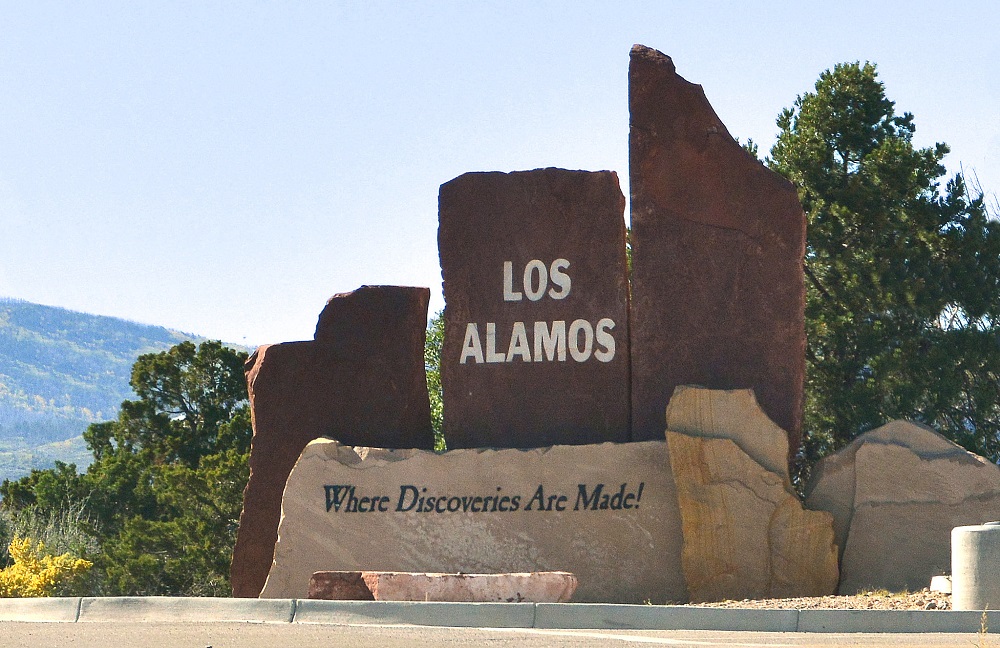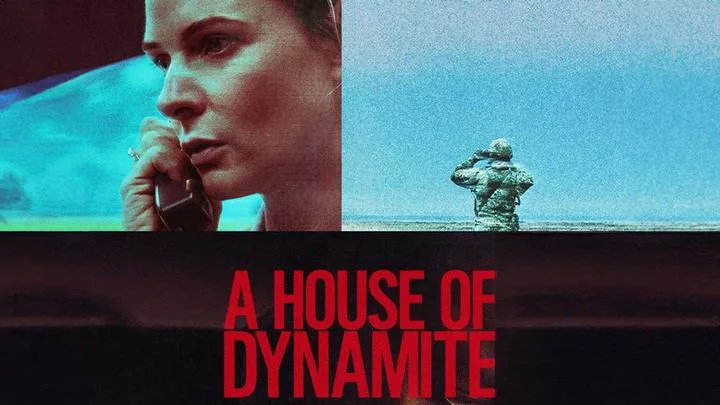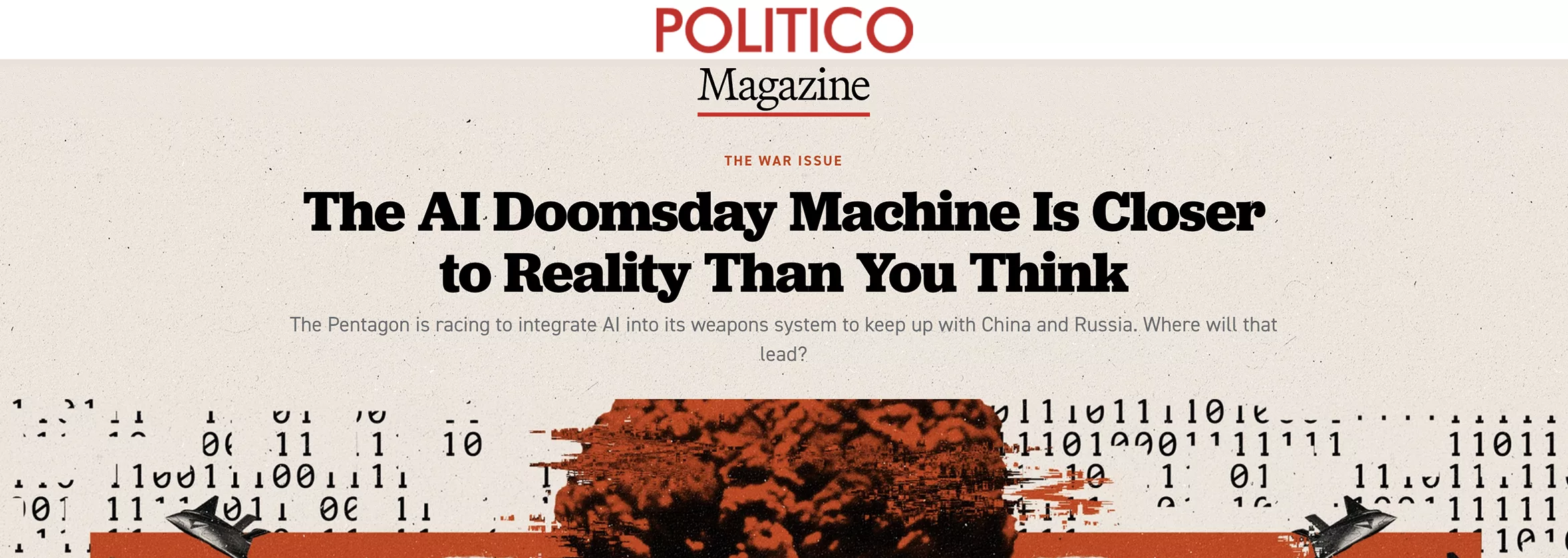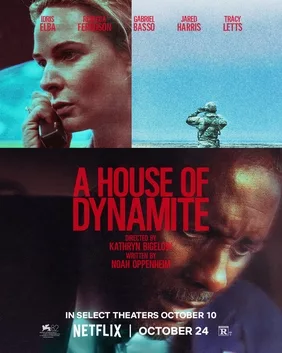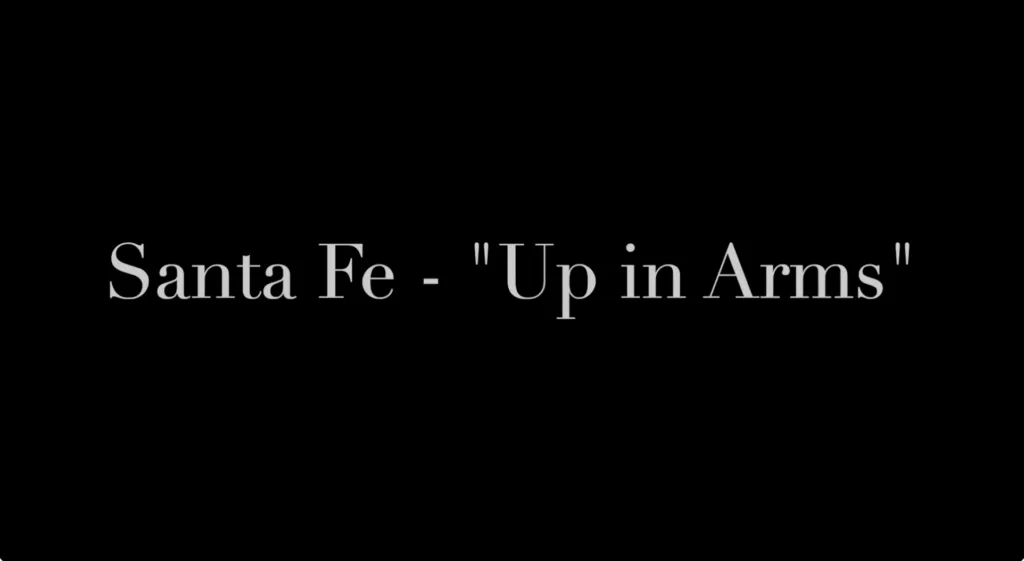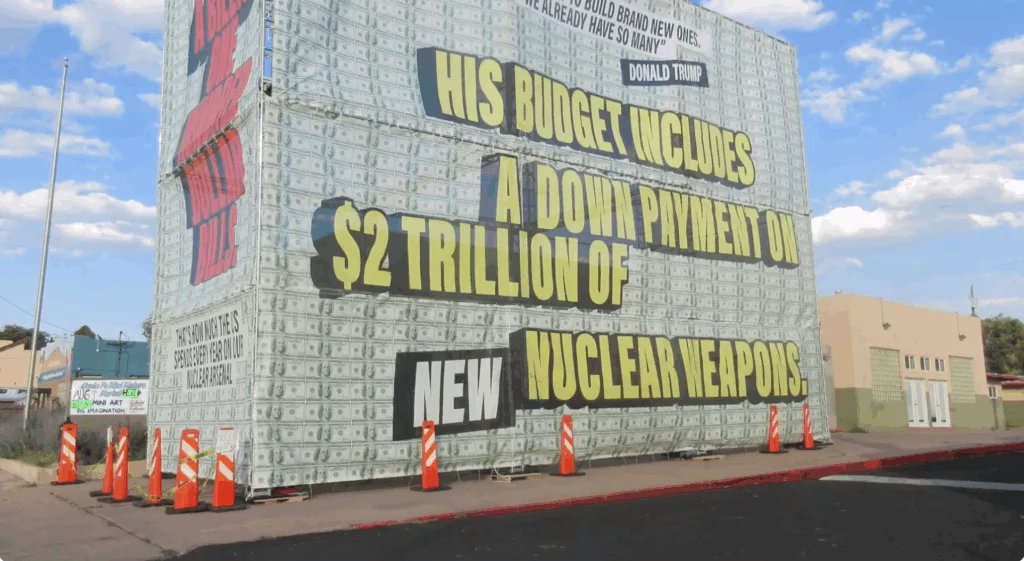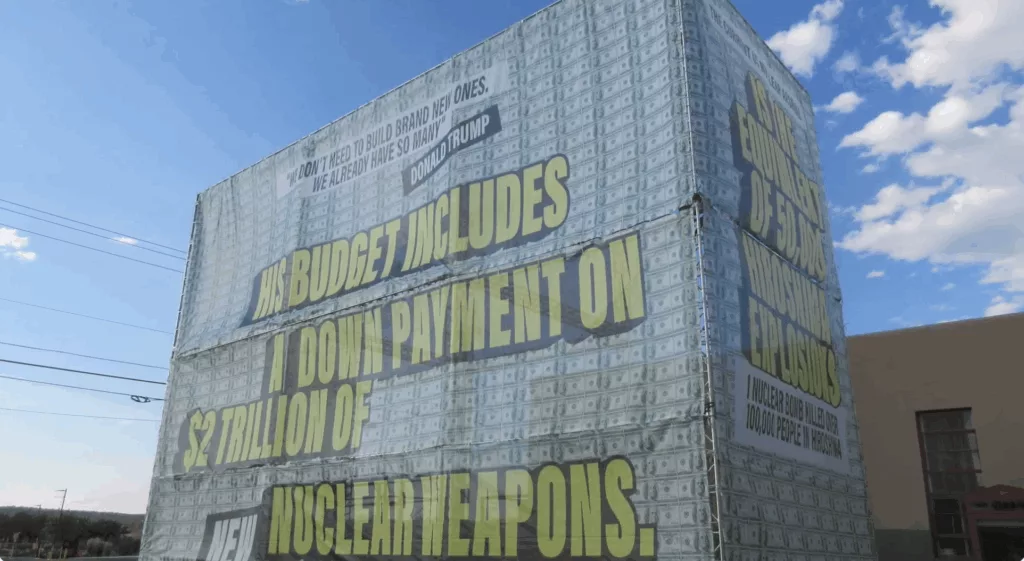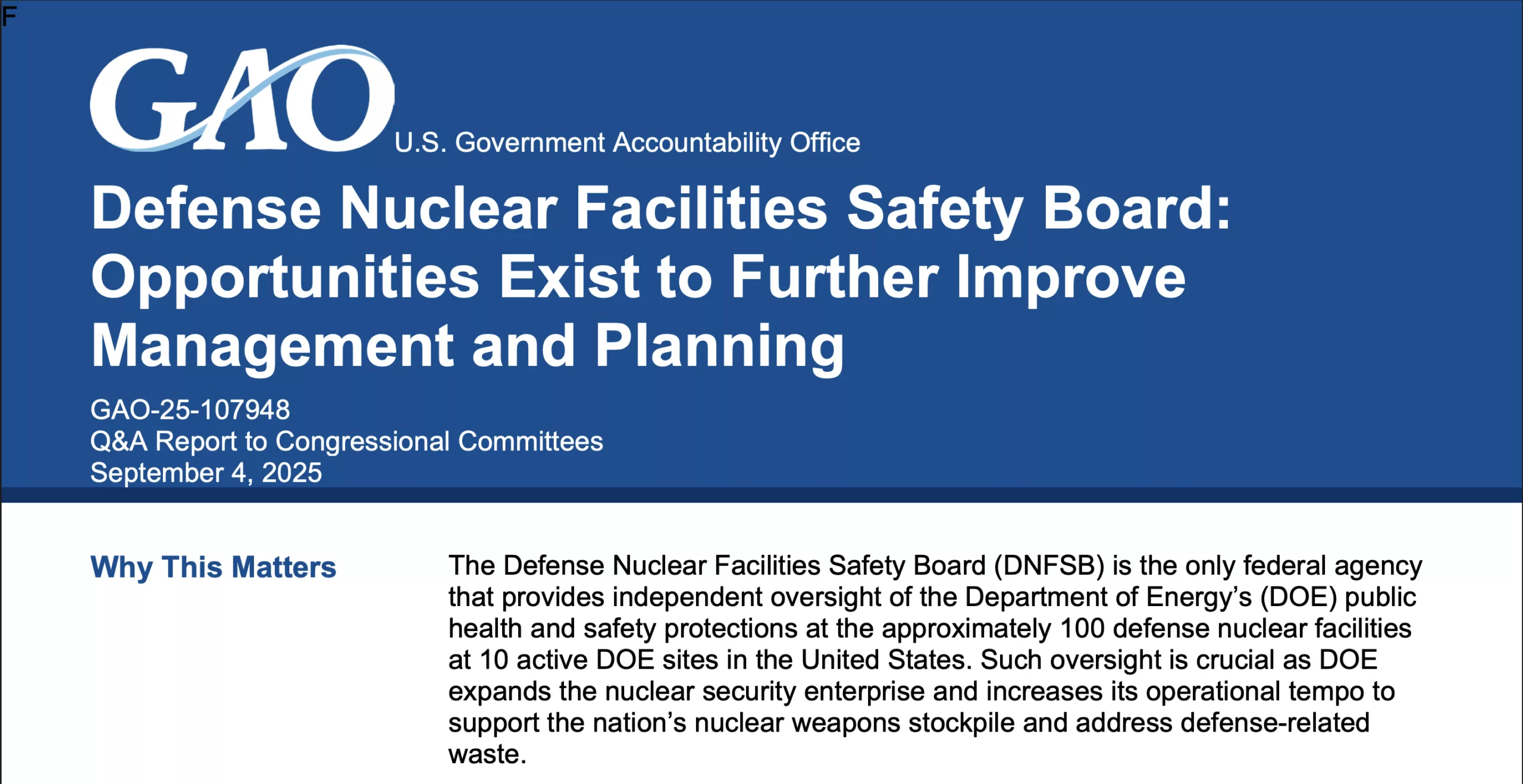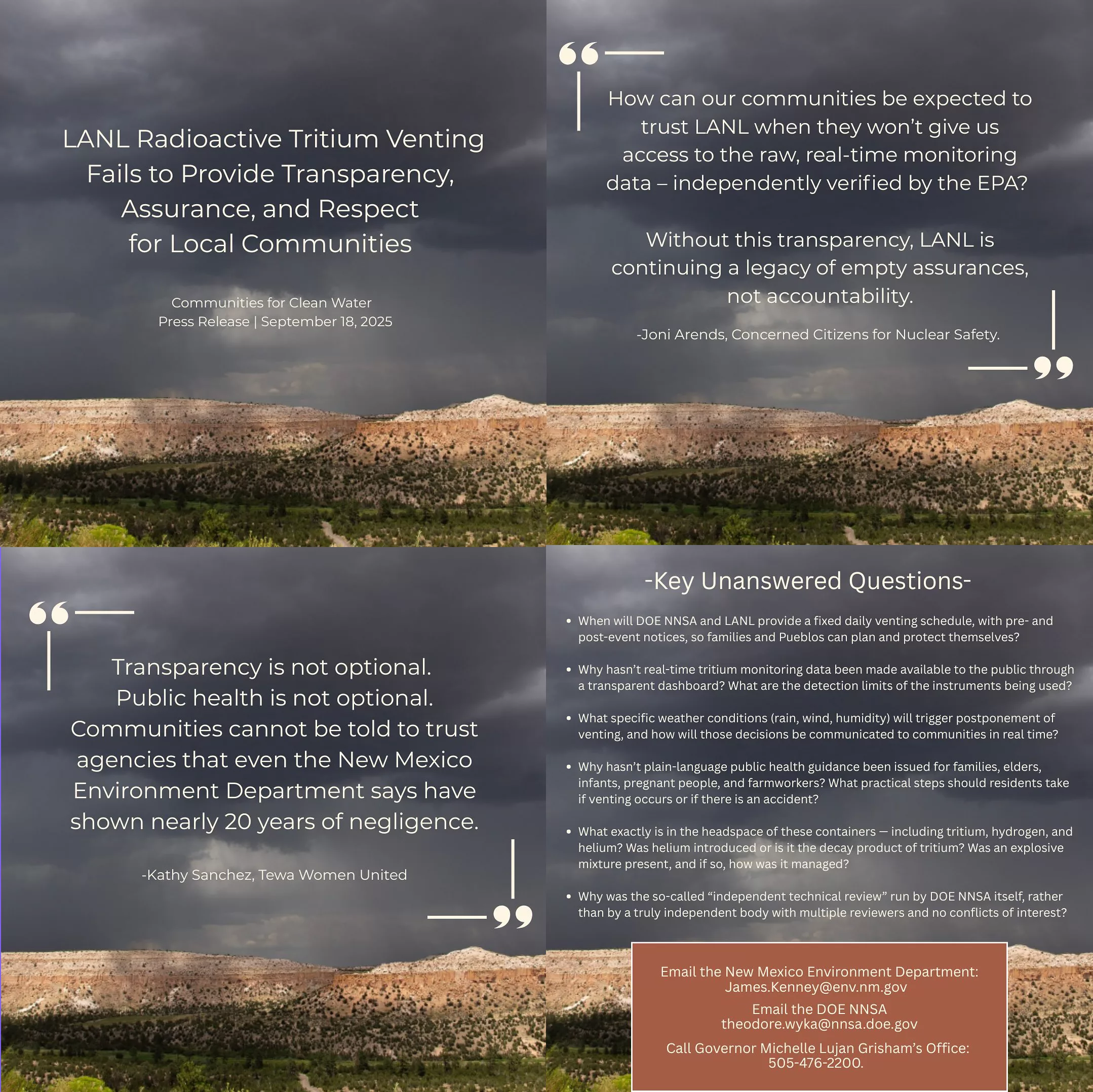Lab Chromium Contamination Confirmed on San Ildefonso Pueblo Land
Comprehensive Cleanup Needed Instead of More Nuclear Weapons
The New Mexico Environment Department has announced:
“A toxic chromium plume from Los Alamos National Laboratory has spread beyond Lab boundaries onto Pueblo de San Ildefonso land for the first time, with contamination exceeding state groundwater standards… These new results are conclusive evidence that the U.S. Department of Energy’s efforts to contain the chromium plume have been inadequate.”
In reality, chromium groundwater contamination probably migrated beyond the LANL/San Ildefonso Pueblo boundary long ago, with past Lab maps of the plume “magically’ stopping at the border. In the past, tribal leadership has commented that it was fortunate that the contamination stopped there, but that any future indications of groundwater contamination on Pueblo land could have serious consequences. The San Ildefonso Pueblo is a sovereign Native American tribal government.
As late as the late 1990s the Lab was falsely claiming that groundwater contamination was impossible because underlying volcanic tuff is “impermeable.” [1] This ignored the obvious fact that the Parajito Plateau is heavily seismically fractured, providing ready pathways for contaminant migration to deep groundwater. By 2005 even LANL acknowledged that continuing increasing contamination of the regional aquifer is inevitable.[2] Some 300,000 northern New Mexicans rely upon the aquifer for safe drinking water. The potential serious human health effects (including cancer) caused by chromium contamination was the subject of the popular movie Erin Brockovich.
LANL chromium plume spreads onto San Ildefonso Pueblo land, NMED says
Nuclear Watch New Mexico executive direcor Jay Coghlan sees PF-4 as being a bigger scale — and having bigger risks — than the other aging buildings.
“PF-4 is not unique in being old,” Coghlan said. “However, PF-4 is totally unique in currently being the only facility that can process large amounts of plutonium … particularly including plutonium pit production. I think, in part, that’s why the Safety Board focuses more on PF-4 than, to my knowledge, than any other single individual facility.”
By:Patrick Lohmann | November 13, 2025 sourcenm.com
An underground plume of toxic chromium has spread from Los Alamos National Laboratory to Pueblo de San Ildefonso land, state Environment Department officials announced Thursday.
The discovery marks the first time the plume has been detected within the pueblo boundaries, officials said in a news release, though they added the plume’s spread does not pose imminent threats to drinking water in the pueblo or in Los Alamos County. That’s because the plume is not near any known private or public wells, officials said.
Long-term ingestion of hexavalant chromium can cause serious health problems or increase risk of certain cancers.
US Stands Alone Defying UN Vote on Nuclear Test Ban Treaty
Could the LDS Church end an ongoing nuclear weapons project? These veteran activists think so.
By Thalif Deen, Inter Press Sevice | November 12, 2025 ipsnews.net
UNITED NATIONS, Nov 12 2025 (IPS) – The US took another step backward –to break ranks with the United Nations– when it voted against a draft resolution calling for the entry into force of the Comprehensive Nuclear-Test-Ban Treaty (CTBT).
The negative vote followed an announcement by President Trump last month that the US plans to resume nuclear testing after a 33-year hiatus. The US stood alone on the UN vote, which was supported by almost all member States in the General Assembly’s First Committee.
The resolution was adopted by an overwhelming majority: with 168 votes in favor, with one against (United States) and 3 abstentions (India, Mauritius, Syria).
During Trump’s first term, the US abstained on the vote. And in other years they had been voting in favour.
Jackie Cabasso, Executive Director, Western States Legal Foundation, which monitors and analyzes U.S. nuclear weapons programs and policies, told IPS the chaos and uncertainty arose from Trump’s factually-challenged social media post that “because of other countries testing programs, I have instructed the Department of War to start testing our Nuclear Weapons on an equal basis.”
The U.S. government’s first ever “No” vote, on the annual UN resolution in support of the Comprehensive Test Ban Treaty (CTBT), raises further troubling questions about U.S. intentions.
Harking to the MX, Utahns call on LDS Church President Oaks to speak out against nuclear missile being developed in Utah
Could the LDS Church end an ongoing nuclear weapons project? These veteran activists think so.
THE SALT LAKE TRIBUNE | November 9, 2025 sltrib.com
Decades ago, peace activists helped keep a major nuclear weapons system out of Utah with help from key figures, chiefly Spencer W. Kimball, then the president of The Church of Jesus Christ of Latter-day Saints.
Now some of those same individuals are calling on the church’s newly ascended president, Dallin H. Oaks, to follow in his predecessor’s footsteps and speak out against the federal government’s development of a new generation of nuclear missile, known as Sentinel, partly in the Beehive State.
“The arms race continues,” the group of 12 Utahns and one former resident write in a letter mailed to church headquarters in early October, “and a new moral challenge faces” the leaders of the Utah-based faith.
Nuclear Weapons Issues & The Accelerating Arms Race: November 2025
Nuclear weapons:
The government shutdown has impact:
National Nuclear Security Agency confirms 152 furloughed at offices in Albuquerque, Los Alamos
Only 14 employees remain at the two sites By: Danielle Prokop-October 22, 2025
The NNSA confirmed 152 New Mexico employees charged with overseeing national laboratories’ nuclear weapons work were furloughed on Oct. 20, 2025. (Courtesy of NNSA)
The federal government this week sent home more than 150 federal New Mexico employees charged with overseeing national laboratories’ nuclear weapons work, with only 14 employees across two sites remaining at work, the National Nuclear Security Agency confirmed to Source NM.
The furloughs include 71 employees at NNSA’s Los Alamos field office and 81 at the Sandia National Laboratories location, NNSA Deputy Director of Communications Laynee Buckels told Source NM in an email. Seven employees remain at each site, working without pay, she said.
The field offices are responsible for “ensuring compliance with federal contracts to manage and operate the national security assets,” according to the NNSA website
To date there doesn’t appear to be furloughs at LANL, whose employees technically work for a contractor rather than the federal government. Congress is not furloughed, but Speaker Mike Johnson has kept the House out of session. As a result, legislation has come to a screeching halt.
Los Alamos’ plutonium facility safety systems need improvement, oversight board says
Nuclear Watch New Mexico executive direcor Jay Coghlan sees PF-4 as being a bigger scale — and having bigger risks — than the other aging buildings.
“PF-4 is not unique in being old,” Coghlan said. “However, PF-4 is totally unique in currently being the only facility that can process large amounts of plutonium … particularly including plutonium pit production. I think, in part, that’s why the Safety Board focuses more on PF-4 than, to my knowledge, than any other single individual facility.”
By Alaina Mencinger amencinger@sfnewmexican.com | November 7, 2025 santafenewmexican.com
An independent oversight agency wants to see improved safety systems at the facility at the heart of Los Alamos National Laboratory’s plutonium pit mission: PF-4.
The Defense Nuclear Facilities Safety Board reported what it believes to be gaps in a safety analysis drafted for PF-4 and delays in upgrades to safety systems in a letter last month to Energy Secretary Chris Wright.
“Maintaining momentum for these safety infrastructure projects is more important in light of the issues with the safety analysis,” the board wrote in the letter dated Oct. 10. It was signed by former acting chairman Thomas Summers.
LANL Prioritizes Plutonium “Pit” Bomb Core Production Over Safety
The independent Defense Nuclear Facilities Safety Board recently released its Review of the Los Alamos Plutonium Facility Documented Safety Analysis. It concluded that:
“While LANL facility personnel continue to make important upgrades to the Plutonium Facility’s safety systems, many of those projects have encountered delays due to inconsistent funding and other reasons. DOE and LANL should consider prioritizing safety-related infrastructure projects to ensure that the Plutonium Facility safety strategy adequately protects the public, as the facility takes on new and expansive national security missions.” (Page 24)
In early October 2024, the Department of Energy’s semi-autonomous National Nuclear Security Administration (NNSA) announced with great fanfare that the Los Alamos Lab had produced its first “diamond stamped” plutonium pit for the nuclear weapons stockpile. Tens of billions of taxpayers’ dollars have been sunk into LANL’s long delayed and over budget pit production program. Given no further announcements, it is not currently known whether or not the Lab is meeting its congressionally required production goals. Endemic nuclear safety problems have long been an intractable issue, at one point even forcing a three-year halt to plutonium operations at LANL’s Plutonium Facility-4 (“PF-4”).
In its recent Review, the Safety Board reported:
“The [2009] Plutonium Facility safety basis described very large potential [radioactive] dose consequences to the public following seismic events…. DOE committed to upgrade and seismically qualify the ventilation system, with a particular focus on a specific ventilation subsystem…”
“As the only facility in the DOE complex that can process large quantities of plutonium in many forms, [PF-4] represents a unique capability for the nation’s nuclear deterrent. The Board has long advocated for the use of safety-related active confinement systems in nuclear facilities for the purposes of confining radioactive materials…Passive confinement systems are not necessarily capable of containing hazardous materials with confidence because they allow a quantity of unfiltered air contaminated with radioactive material to be released from an operating nuclear facility following certain accident scenarios. Safety related active confinement ventilation systems will continue to function during an accident, thereby ensuring that radioactive material is captured by filters before it can be released into the environment… (Page 2, bolded emphases added)
AP: Trump appears to suggest the US will resume testing nuclear weapons for first time in 30 years
“For Trump, who has cast Russia as a “paper tiger” for failing to swiftly subdue Ukraine, the message is that Russia remains a global military competitor, especially on nuclear weapons, and that Moscow’s overtures on nuclear arms control should be acted on.”
By MICHELLE L. PRICE and CHRIS MEGERIAN | October 30, 2025 apnews.com
BUSAN, South Korea (AP) — President Donald Trump appeared to suggest the U.S. will resume testing nuclear weapons for the first time in three decades, saying it would be on an “equal basis” with Russia and China.
The Kremlin pointed out that a global ban on nuclear tests has remained in place, but warned that if any country resumes nuclear testing Russia would follow suit.
There was no indication the U.S. would start detonating warheads, but Trump offered few details about what seemed to be a significant shift in U.S. policy.
He made the announcement on social media minutes before he met with Chinese leader Xi Jinping on Thursday in South Korea. He offered little clarity when he spoke to reporters later aboard Air Force One as he flew back to Washington.
The U.S. military already regularly tests its missiles that are capable of delivering a nuclear warhead, but it has not detonated the weapons since 1992. The Comprehensive Nuclear Test Ban Treaty, which the U.S. signed but did not ratify, has been observed since its adoption by all countries possessing nuclear weapons, North Korea being the only exception.
REUTERS: Trump tells Pentagon to immediately resume testing US nuclear weapons
“Russia – which tested a new nuclear-powered cruise missile on October 21, held nuclear readiness drills on October 22 and tested a new nuclear-powered autonomous torpedo on October 28 – said it hoped Trump had been properly informed that Moscow had not tested a nuclear weapon itself.”
By Trevor Hunnicutt, Ismail Shakil and Kanishka Singh | October 30, 2025 reuters.com
VIEW THE RECORDING: Santa Fe Ecumenical Conversations Towards Nuclear Disarmament at Santa Maria de la Paz Catholic Community – Monday, October 27
Archbishop John C. Wester and NukeWatch New Mexico presented a special evening at Santa Maria de la Paz Catholic Community on Monday, October 27, from 6:00 to 8:00 p.m. MT. Following a presentation from NukeWatch executive director Jay Coghlan on U.S. nuclear weapons “modernization,” the Archbishop shared reflections from his pastoral letter, Living in the Light of Christ’s Peace, and speak about the importance of dialogue and hope in working toward nuclear disarmament.
View the recording at https://www.youtube.com/watch?v=9LFmQzMoJds&t=1s
Trump Orders Nuclear Weapons Testing for New Nuclear Arms Race
New Plutonium “Pit” Bomb Cores at Los Alamos Lab Could Make It Real
Just minutes before meeting with Chinese President Xi Jinping, Trump posted on his Truth Social media platform that “Because of other countries testing programs, I have instructed the Department of War to start testing our Nuclear Weapons on an equal basis. That process will begin immediately.” House Speaker Mike Johnson soon followed on CNN saying, “I think it is an obvious and logical thing to ensure that our weapons systems work.”
No other countries are currently testing nuclear weapons (the last was by North Korea in 2017). Further, any nuclear weapons tests by the U.S. would be performed by the Department of Energy (whose last test was in 1992), not the Department of War (until recently the Department of Defense). Trump was likely referring to Vladimir Putin’s recent claims of a new nuclear powered cruise missile and a tsunami-causing nuclear-armed torpedo that could threaten America’s coastal cities. In addition, China is dramatically expanding its own fleet of intercontinental ballistic missiles.
But central to all this is the U.S.’ own $2 trillion “modernization” program that will rebuild every nuclear warhead in the planned stockpile with new military capabilities and produce new-design nuclear weapons as well. This so-called modernization program will also build new nuclear weapons production facilities expected to be operational until ~2080, and buy new missiles, subs, and bombers from the usual rich defense contractors, all to keep nuclear weapons forever.
‘Nuclear weapons are blasphemous’: Archbishop Wester continues disarmament push with talk
This event was organized by the “Santa Fe Ecumenical Conversations Towards Nuclear Disarmament” group at the Santa Maria de la Paz parish near the Santa Fe Community College. They kindly invited NukeWatch to speak before Archbishop Wester for what turned out to be a wonderful event. The full recording can be viewed at https://www.youtube.com/@SMDLP/streams
By Cormac Dodd cdodd@sfnewmexican.com | October 28, 2025 santafenewmexican.com
Despite saying he has received a somewhat muted response from the local faithful, Santa Fe’s Catholic archbishop is still pushing nuclear disarmament as vital to humanity’s spiritual well-being and continued existence.
“I think nuclear weapons are blasphemous, because I think nuclear weapons are humanity’s attempt to build a Tower of Babel, an attempt to eat from the apple of the tree of the Garden of Eden, to become like God, to become gods,” Archbishop John C. Wester said in a roughly 30-minute address at Santa Maria de la Paz Catholic Church south of Santa Fe.
“In humility, we must avoid inventing anything that, in a matter of hours, can destroy what God has created,” the leader of the Archdiocese of Santa Fe continued. “The story of Adam and Eve is archetypal, I think: When human beings try to become as God, they lose the Garden of Eden and they must endure the cruel reality of paradise lost.”
The archbishop’s comments followed a journey he undertook to Japan on the 80th anniversary of the U.S. military’s decision to drop atomic bombs on Hiroshima and Nagasaki toward the end of World War II. He spoke in front of an audience of about 50 people — who gave Wester a standing ovation — at Monday’s event
In a Looming Nuclear Arms Race, Aging Los Alamos Faces a Major Test
The lab where Oppenheimer developed the atomic bomb is the linchpin in the United States’ effort to modernize its nuclear weapons. Yet the site has contended with contamination incidents, work disruptions and old infrastructure.
By Alicia Inez Guzmán | October 28, 2025 The New York Times nytimes.com
In a sprawling building atop a mesa in New Mexico, workers labor around the clock to fulfill a vital mission: producing America’s nuclear bomb cores.
The effort is uniquely challenging. Technicians at Los Alamos National Laboratory must handle hazardous plutonium to create the grapefruit-size cores, known as pits. They do so in a nearly 50-year-old building under renovation to address aging infrastructure and equipment breakdowns that have at times disrupted operations or spread radioactive contamination, The New York Times found.
Now, the laboratory is under increasing pressure to meet the federal government’s ambitions to upgrade the nation’s nuclear arsenal. The $1.7 trillion project includes everything from revitalizing missile silos burrowed deep in five states, to producing new warheads that contain the pits, to arming new land-based missiles, bomber jets and submarines.
But the overall modernization effort is years behind schedule, with costs ballooning by the billions, according to the Congressional Budget Office. In 2018, Congress charged Los Alamos with making an annual quota of 30 pits by 2026, but by last year it had produced just one approved for the nuclear stockpile. (Officials have not disclosed whether more have been made since then.)
*The featured image differs from the article photo due to usage rights.
Why Putin’s ‘invincible’ nuclear-powered missile is more likely to become a disastrous ‘flying Chernobyl’ for Russia
The US abandoned efforts to build nuclear-powered missile weapons during the 1950s arms race with the Soviet Union as a nuclear-powered missile would effectively be a huge radiation risk.
Jeffrey Lewis, a nuclear nonproliferation expert at Middlebury College, described it as a “tiny flying Chernobyl,” referencing the Soviet power plant that melted down and covered a 1,600-mile area with toxic radiation…While Lewis believes the Burevestnik is only capable of subsonic speed and easy to intercept, he warned that Russia’s ambition poses a return to the Cold War era.
“NATO aircraft could intercept it. The problem is that Burevestnik is yet another step in an arms race that offers no victory for either side,” he wrote on X.
By Ronny Reyes | October 28, 2025 nypost.com
Russian strongman Vladimir Putin’s latest threats that Moscow is preparing to deploy its new “invincible” nuclear-powered cruise missile has drawn a rebuke from President Trump and a reminder of America’s own nuclear might.
But experts say the Burevestnik missile could end up being more like a disastrous “flying Chernobyl” for Russia — and proves Putin is actually nervous about the possibility of the US giving Tomahawk cruise missiles to Ukraine.
George Barros, of the Washington-based Institute for the Study of War, described Putin’s ominous Sunday announcement as a form of fear mongering from a Kremlin afraid that the US could give Kyiv a much more conventional weapon — the tried and true Tomahawk.
Russia tested new nuclear-powered Burevestnik cruise missile
“For Trump, who has cast Russia as a “paper tiger” for failing to swiftly subdue Ukraine, the message is that Russia remains a global military competitor, especially on nuclear weapons, and that Moscow’s overtures on nuclear arms control should be acted on.”
By Guy Faulconbridge and Lidia Kelly Tim Balk | October 26, 2025 reuters.com
- Russia tests nuclear-capable Burevestnik missile
- Missile flew for 14,000 km, 15 hours
- Putin says it can pierce any missile defences
Trump Administration Providing Weapons Grade Plutonium to Sam Altman
“If there were adults in the room and I could trust the federal government to impose the right standards, it wouldn’t be such a great concern, but it just doesn’t seem feasible.”
By: Joe Wilkins | October 24, 2025 futurism.com
With the economy the way it is these days, it’s nice to have a little walking around money.
Donald Trump certainly thinks so. Since his return to the White House, the president has labeled 440 federal properties for possible sale, leased 13.1 million acres of public land for strip mining, and held a fire sale for satellites developed by NASA’s Jet Propulsion Lab.
In one of his wildest money moves to date, the Financial Times reports that Trump is now offering companies access to plutonium from America’s arsenal of cold war nuclear missiles.
On Tuesday, the US Department of Energy (DOE) launched an application for interested parties to apply for access to a maximum of 19 metric tonnes — a little under 42,000 pounds — of weapons-grade plutonium, which has long been a key resource undergirding the US nuclear arsenal.
One of the companies anticipated to receive shipments of the fissile isotope from the DOE is Oklo, a “nuclear startup” backed — and formerly chaired — by OpenAI CEO Sam Altman. Earlier in October, Oklo was one of four US companies chosen by the DOE to join a new pilot program meant to rush the testing and approval of experimental reactor designs.
As the FT reports, we won’t know for certain until December 31, when the DOE announces the companies selected to purchase the plutonium, but it’s likely Oklo will be among them. That’s stirring up plenty of anxiety throughout the scientific community, who say the relaxed approach to nuclear development is a major cause for alarm.
“If there were adults in the room and I could trust the federal government to impose the right standards, it wouldn’t be such a great concern, but it just doesn’t seem feasible,” Edwin Lyman, a physicist with the Union of Concerned Scientists told the FT.
U.S. Agency That Protects Nuclear Arsenal to Furlough Workers
Jay Coghlan, the executive director of Nuclear Watch New Mexico, a private group that monitors the agency, said it was unclear if the furloughs would have any immediate effect on nuclear safety. “As a baseline, the nuclear safety officers have always been understaffed. There is simply not enough federal oversight as is. And then you’re talking about furloughing more,” he added.
By Tim Balk | October 17, 2025 nytimes.com
![]() The National Nuclear Security Administration said 1,400 workers would be affected by Monday.
The National Nuclear Security Administration said 1,400 workers would be affected by Monday.
Nuclear weapons safety oversight in decline with Trump, Biden inaction
The lone independent federal agency responsible for ensuring safety at U.S. nuclear weapons sites — including Hanford in Washington state — will lose its ability to issue recommendations for safer work by January if the Trump administration doesn’t replenish its board, which this month dwindles to one member.
By Patrick Malone | October 15, 2025 seattletimes.com
The Defense Nuclear Facilities Safety Board ensures adequate public health and worker safety by scrutinizing hazardous work conducted by the U.S. Department of Energy and its contractors that produce and maintain the nuclear arsenal. If the Trump administration and Congress don’t move quickly to populate the board, it will be incapable of issuing formal safety recommendations to the Energy Department, according to a report last month from the Government Accountability Office, Congress’ investigative arm.
If the board is without a quorum of at least three members for a year, “the agency would essentially be able to offer only nonbinding advice to DOE,” according to the report.
“The whole idea of having the board in place is to provide the optics in addition to the substance,” Nathan Anderson, a Washington state-based director in the GAO’s natural resources division, told The Seattle Times.
The board does not have regulatory or enforcement authorities, but its advice carries significant weight and cannot be easily dismissed or disregarded, the GAO report states. The board’s recommendations to the U.S. secretary of energy are published for public comment, and the secretary must respond in writing. The board also reports each year to selected congressional committees on its recommendations to the Energy Department and any outstanding safety problems.
FULL ORIGINAL ARTICLE (SEATTLE TIMES)
YOU CAN HELP SAVE THE DNFSB TODAY:
Continue reading
New Article about “Participatory Democracy in Action” Describes WIPP Permit Negotiations
Thanks to our friends at Concerned Citizens for Nuclear Safety for this article:
In an essay for NYU’s Democracy Project, David F. Levi, a former federal judge and director emeritus of the Bolch Judicial Institute at Duke Law, reflected on the negotiations he facilitated in New Mexico about the renewal of the hazardous waste permit for the Waste Isolation Pilot Plant (WIPP), a deep geologic repository for plutonium-contaminated waste generated in the fabrication of nuclear weapons. Judge Levi’s essay is entitled “Participatory Democracy in Action.” He wrote:
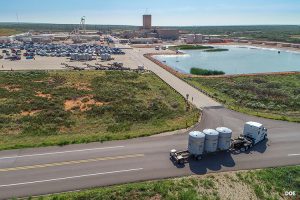 “A couple of years ago, I was asked to mediate a dispute between the U.S. Department of Energy (DOE) and the New Mexico Environment Department (NMED) concerning the renewal of a required state permit for DOE’s Waste Isolation Pilot Plant (WIPP), the nation’s only deep underground nuclear waste storage facility, located outside of Carlsbad, New Mexico. I thought I could help the two government entities but quickly came to realize that under the mediation procedures followed by New Mexico, the mediation would also involve citizen groups whose ultimate concurrence was essential to any complete resolution. This was entirely new to me.
“A couple of years ago, I was asked to mediate a dispute between the U.S. Department of Energy (DOE) and the New Mexico Environment Department (NMED) concerning the renewal of a required state permit for DOE’s Waste Isolation Pilot Plant (WIPP), the nation’s only deep underground nuclear waste storage facility, located outside of Carlsbad, New Mexico. I thought I could help the two government entities but quickly came to realize that under the mediation procedures followed by New Mexico, the mediation would also involve citizen groups whose ultimate concurrence was essential to any complete resolution. This was entirely new to me.
“In this case, there were seven such citizen groups entitled to participate and representing a variety of points of view. There was one group representing some of the government and business leaders of the town of Carlsbad who favored permit renewal on terms ensuring the continued long-term operation of WIPP. There were six groups expressing a variety of concerns about nuclear waste coming to New Mexico. They sought a more restrictive permit.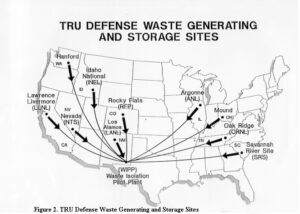
“To my astonishment, over the course of four full days, we worked through the multitude of issues and came to complete agreement. Something magical had happened. Thanks to the goodwill of the DOE and its contractor, the remarkable daily attendance and attentiveness of the NMED Secretary and the measured and well-informed way in which the various citizen groups made their points, we were able to find consensus and craft permit language that was acceptable to everyone.
“For me, as a former judge and mediator, the experience was thrilling. It was an experience of participatory democracy in action that made me proud of our fellow citizens and our government. Three aspects of the experience stand out. First, everyone in the room had taken responsibility for the way in which our nation’s only deep underground nuclear storage facility would be operated for the next 10 years. The citizen participants were not just making suggestions; they were assuming many of the attributes of decision makers. Second, all participants were advocating, compromising, and collaborating on behalf of what they saw as the public interest. These are the essential skills of democracy—the civic virtues so central to the Founders’ vision of what would make democracy work in America—and they require practice. Finally, over four days around a table, the citizens were able to take the measure of the DOE and NMED representatives. They came to realize, as I did, that these public servants, as well as the DOE contractor, were very well-informed, experienced, and intentioned. The government representatives had a similar experience of coming to appreciate the citizen questions and points of view. A government that relies on trust needs this kind of interaction to maintain that trust.
“It seems our democracy would be strengthened if we could extend the benefits of this kind of participatory structure to other areas of our legal and regulatory systems.”
“In Democracy in America, Alexis de Tocqueville made some of these points in reference to the jury trial in civil cases. He emphasized the importance of the civil jury trial as a free “public school” [https://contextus.org/Tocqueville,_Democracy_in_America_(1835),_Book_I,_Chapter_XVI_Causes_Mitigating_Tyranny_In_The_United_States_(Part_II).13?ven=Gutenberg&lang=en]  educating jurors in the democratic virtues and skills and teaching them to assume responsibility. In the same vein, every trial judge I know would attest to the importance of the jury experience for building confidence in the courts. After a trial, judges often hear words of gratitude from jurors who are deeply impressed by the legal process and are honored to have participated despite their initial dismay at being called to jury service. Sadly, the number of jury trials has diminished, particularly in federal court. Reversing that trend is a worthy goal, particularly for a branch of government that depends so heavily on public confidence.
educating jurors in the democratic virtues and skills and teaching them to assume responsibility. In the same vein, every trial judge I know would attest to the importance of the jury experience for building confidence in the courts. After a trial, judges often hear words of gratitude from jurors who are deeply impressed by the legal process and are honored to have participated despite their initial dismay at being called to jury service. Sadly, the number of jury trials has diminished, particularly in federal court. Reversing that trend is a worthy goal, particularly for a branch of government that depends so heavily on public confidence.
“As a final reflection: any persons involved as litigants will have an experience of the legal system. The experience can advance their sense of agency and participation, their ability to disagree civilly, and their trust in the courts. But how can these objectives be obtained when so many Americans cannot afford a lawyer? We can do so much better to provide understanding of and access to our justice system.”
The six New Mexico based non-governmental organizations were Citizens for Alternatives to Radioactive Dumping (CARD), Concerned Citizens for Nuclear Safety (CCNS), Conservation Voters New Mexico (CVNM), Nuclear Watch New Mexico, Southwest Alliance for a Safe Future (SAFE), and Southwest Research and Information Center (SRIC). The individual was Steve Zappe, a grandfather and former NMED WIPP Program Manager.
“A House of Dynamite” New Netflix Nuclear Catastrophe Film: Fiction, for Now
The reviews are rolling in for “A House of Dynamite,” which premiered in Europe earlier this month before coming to the U.S. on October 10th, with a full Netflix release scheduled for the 24th. Here’s the trailer, and see the schedule for Santa Fe theater showings here:
This Week! Santa Fe Theater Screenings for the Film “A House of Dynamite”
I attended one of these screenings last night, and I’ll let the professional critic reviews give the gist:
The Kathryn Bigelow thriller looks at what might happen if a ballistic missile were headed to the U.S. The director hopes the movie will start a conversation. New York Times: At Venice, ‘A House of Dynamite’ Is Scarier Than Most Horror Films
“The Netflix thriller captures from multiple perspectives the White House response to an unattributed missile launch headed for a major U.S. city in the harrowing 20 minutes until projected impact…”An unrelenting chokehold thriller so controlled, kinetic and unsettlingly immersive that you stagger out at the end of it wondering if the world will still be intact.” ‘A House of Dynamite’ Review: Idris Elba and Rebecca Ferguson in Kathryn Bigelow’s Precision-Tooled, Viscerally Unsettling Nail-Biter
“Told from the perspective of soldiers at a remote Alaskan missile base, staffers in the White House situation room, military officials at US Central Command (CENTCOM), and the president of the United States, the film weaves an overlapping timeline to show how the United States would respond to a missile attack…The film doesn’t want viewers to ask themselves how to thwart a nuclear attack on the United States. Rather, it wants the viewer to question the value of having nuclear weapons at all. ‘None of this makes sense,’ the President (Idris Elba) bemoans, ‘Making all these bombs and all these plans.'”
“A House of Dynamite is a terrifying examination of how terribly wrong things can go even with highly competent people in charge…But that’s also not necessarily the world we’re living in…The film shows why the worst can happen, even when competent, well-meaning people are trying to do the right thing.
But what if competence and decency are in short supply?” A House of Dynamite: Bigelow’s latest thriller shows why nuclear bombs are only part of the danger
This film left me reeling with tension and anxiety and exactly as the Times article titles it, is scarier than most horror films. Unlike ‘Oppenheimer,’ which largely glorified the invention of the atomic weapon, ‘A House of Dynamite’ makes it impossible to ignore the threat that nuclear weapons pose to our world. Working backwards from perspectives, and focused on how we can actually improve our odds of keeping this story a fictional one, here is what struck me most about this film:
-
-
Only one person decides what happens. But the real threat isn’t one reckless leader — it’s a reckless system. The final segment of the film features the “nuclear football” heavily, a briefcase containing launch procedures and options. In the United States, the president holds the sole and absolute authority to order the use of nuclear weapons. In the film, there are many voices in the President’s ear, but two primary perspectives quickly emerge after the defense fails and the ICBM remains inbound to its U.S. target: “One side advocates a retaliatory strike; the other, nothing. ‘It’s surrender or suicide,’ one adviser tells the President,” – thebulletin.org. The military aide carrying the nuclear football is tasked with providing the President the list of options if retaliation is chosen. An absolute must-read, Daniel Ellsberg’s book “The Doomsday Machine” breaks down many of the themes in the film with pure and terrifyingly honest account of Cold War-era nuclear strategy. In terms of launch authority, he describes how the inherent instability of the delegated command structure of the nuclear apparatus makes accidental or unwanted war an ever-present danger.
-
LANL tritium containers to head to Texas after last treatment
Four flanged tritium waste containers have been depressurized and transported to Los Alamos National Laboratory’s Weapons Engineering Tritium Facility, where they will be treated further before heading out-of-state for disposal.
By Alaina Mencinger amencinger@sfnewmexican.com | October 15, 2025 santafenewmexican.com
The containers’ final destination is Waste Control Specialists, a West Texas facility that handles the storage and disposal of radioactive waste.
The more than 1,300-acre facility in Andrews County is located on an approximately 14,000 acre property, which is sited on a thick clay formation which the company describes as “nearly impermeable.”
New documents have been added to the Los Alamos Legacy Cleanup Contract Electronic Public Reading Room.
All legacy cleanup documents required to be posted after April 30, 2018, are available on the site linked above.
For legacy cleanup documents that were posted prior to April 30, 2018, please visit the LANL electronic public reading room.
- Review, Notice of Completion of Off-Site Waste Shipments for Final Disposal, Activities 3.1.5, 3.1.8, and 3.3.4, Compliance Plan, Site Treatment Plan, Federal Facility Compliance Order Los Alamos National Laboratory [July 31, Aug. 21, 2025]
https://ext.em-la.doe.gov/GovFTPFiles/api/GetFiles/GetFile?fileName=EMID-703933_NMED_Review_STP_Shpmt_Jul_31_Aug_21_101525.pdf
Strong Political and Public Opposition Means Consolidated Interim Storage Facility (CISF) in NM “Impossible in the Near Future”
NEW UPDATE OCTOBER 10, 2025:
Holtec abandons plan to build New Mexico storage facility for spent nuclear fuel
This is excellent news. The Governor and state legislature (specifically Senator Jeff Steinborn and Representative McQueen) are to be commended for not allowing New Mexico to become the nation’s dumping ground for highly radioactive commercial spent fuel rods, especially when the Land of Enchantment has never had its own nuclear energy plant. Hard work from many New Mexicans made this happen.
So-called “interim” storage would never be interim when the federal government has failed for more than four decades to find a permanent repository for these lethal wastes. This also shows how hollow all the hype is about the claimed renaissance of nuclear power, when on the front end the industry can’t survive without taxpayer handouts, and on the back end can’t solve its radioactive waste problem.
Holtec’s quote that “New Mexico’s acquiescence is necessary” for interim storage to go forward is interesting, implying that we have to surrender as the nuclear colony that we are. Well, guess what, we didn’t surrender, and I predict you’ll see more of this. Moreover, whether you’re pro-nuclear or anti-nuclear, Holtec is an ethically questionable company, which is why the attorneys general of New Jersey and Massachusetts have sued it.
Adiós and good riddance, Holtec!
New York Times: Tax Break Scandal Leads to $5 Million Fine for N.J. Energy Company
SEE MORE:
Nuclear Weapons Issues & The Accelerating Arms Race: September 2025
Nuclear Weapons Update:
Putin has offered Trump a one-year extension of the numerical cap on strategic nuclear weapons in the new Strategic Arms Reduction Treaty which is 1,550 warheads (however, B52s are counted as one warhead while they can carry a dozen). New START expires in February 2026, which will be the first time the world will be without any nuclear arms control treaties since the mid-1970s. Trump has said it sounded like a good idea.
Note: New START ratification in 2010 provided the opportunity for Republicans in the Senate to attach the condition of $88 billion for nuclear weapons “modernization” that has since metastasized to ~$2 trillion. Nuclear disarmament must be prioritized as the ultimate goal over simply continued arms control.
A mere extension of the numerical cap would not involve Congressional ratification. The extension of New START’s numerical cap is in part to allow for a year in which to begin negotiations for a treaty replacement.
Plutonium Pit Production:
A draft plutonium pit production programmatic environmental impact statement is expected to be released next year in early 2026.
Accelerating Arms Race:
Is North Korea set to become world’s ‘fourth ICBM power’ after missile breakthrough? | Park Chan-kyong | South China Morning Post | September 11, 2025
A new era in North Korea’s missile programme may be dawning, as analysts warn of an imminent test launch of an intercontinental ballistic missile capable of carrying multiple warheads to the US mainland. Fresh from his appearance at China’s Victory Day parade in Beijing last week, North Korean leader Kim Jong-un personally oversaw the trial of a lighter, more robust solid-fuel ICBM engine, state media reported on Tuesday, touting the achievement as a “strategic” breakthrough.
Saudi Arabia signs a mutual defense pact with nuclear-armed Pakistan after Israel’s attack on Qatar | MUNIR AHMED & JON GAMBRELL | AP NEWS | September 18, 2025
DUBAI, United Arab Emirates (AP) — Pakistan’s defense minister says his nation’s nuclear program “will be made available” to Saudi Arabia if needed under the countries’ new defense pact, marking the first specific acknowledgment that Islamabad had put the kingdom under its nuclear umbrella.
Defense Minister Khawaja Mohammad Asif’s comments underline the importance of the pact struck this week between Pakistan and Saudi Arabia, which have had military ties for decades.
The move is seen by analysts as a signal to Israel, long believed to be the Middle East’s only nuclear-armed nation. It comes after Israel’s attack targeting Hamas leaders in Qatar last week killed six people and sparked new concerns among Gulf Arab nations about their safety as the Israel-Hamas war devastated the Gaza Strip and set the region on edge.
Russia suspected of helping North Korea build nuclear submarines, Seoul investigating | Park Chan-kyong | South China Morning Post | September 18, 2025
South Korea is investigating reports that Russia has supplied North Korea with nuclear submarine reactor modules, a move analysts see as highly plausible and one that could mark a breakthrough in Pyongyang’s decades-long push for a nuclear-powered navy… At the 8th Party Congress in January 2021, North Korea declared five core defence goals, including the development of nuclear-powered submarines and submarine-launched strategic nuclear weapons.
China Hardens Military Stance Against U.S. With Nuclear Weapons and Tough Talk | Brian Spegele | The Wall Street Journal| September 18, 2025
China played down its rapidly rising military might for years. In the past few weeks, Beijing has broadcast a steady drumbeat of firepower displays and muscular rhetoric, carrying an unmistakable warning for the U.S… Part of China’s confidence stems from the rapid growth of its firepower. The Pentagon estimates that China’s stockpile of nuclear warheads has more than doubled since 2020, alongside a growing array of options to launch those weapons, from mobile ground-launch systems to increasingly stealthy submarines.
Holtec Pulls Out of New Mexico Spent Nuclear Fuel Interim Storage Project
Holtec International has confirmed it is canceling plans to build a consolidated interim storage facility for spent nuclear fuel in southeastern New Mexico.
By Radwaste Solutions | October 9, 2025 ans.org
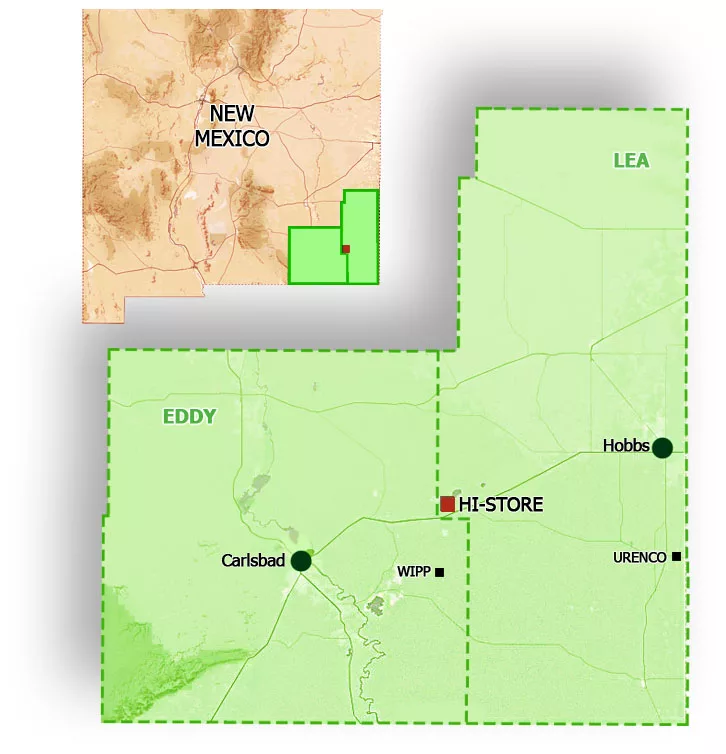
Named the HI-STORE CISF, the facility would have stored up to 10,000 canisters of commercial SNF on land owned by the Eddy-Lea Energy Alliance (ELEA) near the towns of Carlsbad and Hobbs.
“After discussions with our longtime partner in the HI-STORE project, the Eddy-Lea Energy Alliance, and due to the untenable path forward for used fuel storage in New Mexico, we mutually agreed upon canceling the agreement. This allows for ELEA to work to redevelop the property in a manner that fits their needs and allows Holtec to work with other states who are amenable to used fuel storage based on the recent DOE work on public education and outreach,” Holtec said in a statement (emphasis added).
Following the U.S. Supreme Court’s June ruling in NRC v. Texas, which found that petitioners did not have standing to challenge the Nuclear Regulatory Commission’s licensing of Interim Storage Partners’ CISF in Texas, Holtec said it expected to have its HI-STORE CISF license reinstated, allowing the company to move forward with the project. Holtec and ISP’s NRC licenses were vacated by the 5th Circuit Court of Appeals in a 2023 ruling.
Despite the court’s decision, New Mexico Gov. Michelle Lujan Grisham said she remained committed to preventing the HI-STORE CISF from being built. In 2023, New Mexico passed a bill barring the storage and disposal of high-level radioactive waste in New Mexico without the state’s explicit consent.
The AI Doomsday Machine Is Closer to Reality Than You Think
“Most troubling to experts on AI and nuclear weapons is that it’s getting harder and harder to keep decisions about targeting and escalation for nuclear weapons separate from decisions about conventional weapons.”
“There is no standing guidance, as far as we can tell, inside the Pentagon on whether and how AI should or should not be integrated into nuclear command and control and communications,” says Jon Wolfsthal, director of global risk at the Federation of American Scientists.
By Michael Hirsh | September 2, 2025 politico.com
Jacquelyn Schneider saw a disturbing pattern, and she didn’t know what to make of it.
Last year Schneider, director of the Hoover Wargaming and Crisis Simulation Initiative at Stanford University, began experimenting with war games that gave the latest generation of artificial intelligence the role of strategic decision-makers. In the games, five off-the-shelf large language models or LLMs — OpenAI’s GPT-3.5, GPT-4, and GPT-4-Base; Anthropic’s Claude 2; and Meta’s Llama-2 Chat — were confronted with fictional crisis situations that resembled Russia’s invasion of Ukraine or China’s threat to Taiwan.
Director Kathryn Bigelow is Sounding the Nuclear Alarm – Washington Post New Review
“A House of Dynamite” asks: How would the White House respond in the face of a nuclear attack?
By Max Boot | October 2, 2025 washingtonpost.com
VIEW MORE: “A House Of Dynamite” Q&A w/ Director Kathryn Bigelow, Tracy Letts, Jared Harris, And More At New York Film Fest —
80th Commemorations of Ban the Bomb – Trinity, Hiroshima & Nagasaki Remembrances in New Mexico
Exchange Monitor: DNFSB makes agency fixes, but needs members, GAO finds
The Defense Nuclear Facilities Safety Board (DNFSB) has tackled all but a few third-party recommendations to improve its culture over the past decade but suffers from a depleted board, according to a new report.
By ExchangeMonitor | September 5, 2025 santafenewmexican.com
Progress is tough with the five-person board probably…
China Hardens Military Stance Against U.S. With Nuclear Weapons and Tough Talk
Xi positions Beijing as powerful center of new global order as security forum convenes in capital
By Brian Spegele | September 18, 2025 wsj.com
BEIJING—China played down its rapidly rising military might for years. In the past few weeks, Beijing has broadcast a steady drumbeat of firepower displays and muscular rhetoric, carrying an unmistakable warning for the U.S….
Saudi Arabia signs a mutual defense pact with nuclear-armed Pakistan after Israel’s attack on Qatar
While not specifically discussing the bomb, the agreement states “any aggression against either country shall be considered an aggression against both,” according to statements issued by both Pakistan’s Foreign Affairs Ministry and the state-run Saudi Press Agency.
By MUNIR AHMED and JON GAMBRELL | September 18, 2025 apnews.com
ISLAMABAD (AP) — Saudi Arabia and nuclear-armed Pakistan have signed a mutual defense pact that defines any attack on either nation as an attack on both — a key accord in the wake of Israel’s strike on Qatar last week.
The kingdom has long had close economic, religious and security ties to Pakistan, including reportedly providing funding for Islamabad’s nuclear weapons program as it developed. Analysts — and Pakistani diplomats in at least one case — have suggested over the years that Saudi Arabia could be included under Islamabad’s nuclear umbrella, particularly as tensions have risen over Iran’s atomic program.
COMMUNITIES FOR CLEAN WATER: LANL Radioactive Tritium Venting Fails to Provide Transparency, Assurance, and Respect for Local Communities
FOR IMMEDIATE RELEASE: September 18, 2025
Santa Fe, NM — As NNSA and LANL continue operations to depressurize Flanged Tritium Waste Containers, Communities for Clean Water (CCW) calls out federal agencies for issuing vague assurances instead of transparent, verifiable data — and for dismissing community concerns with contradictory and incomplete statements that disregard what independent experts have found, the Department of Energy’s (DOE) own legal obligations, and the New Mexico Environment Department’s (NMED) acknowledgment that LANL has a long record of compliance failures.
“How can our communities be expected to trust LANL when they won’t give us access to the raw, real-time monitoring data – independently verified by the EPA,” asks Joni Arends with Concerned Citizens for Nuclear Safety. “Without this transparency, LANL is continuing a legacy of empty assurances, not accountability.”
Key Concerns:
-
Lack of real-time transparency – Since Friday (Sept. 12), the public has been forced to rely on NMED’s Facebook page for piecemeal updates. While LANL’s website provides very brief daily summaries, no near-real-time monitoring dashboard from DOE, NNSA, or LANL has been made available.
-
Vague assurances, not real information – NNSA’s updates claim “no tritium was released” while simultaneously telling the public to expect “very low levels of tritium” for subsequent venting. Without numbers, monitoring data, or detection thresholds, these phrases do not provide reassurance.
-
Weather risks – LANL has not disclosed thresholds for wind, rain, or humidity that would postpone venting. Communities watch weather shifts in real time but are left in the dark about how safety decisions are being made.
-
Dismissal of public health concerns – When asked for plain-language guidance that NMED stated LANL would provide, LANL responded only with “no offsite impact anticipated.” This is not meaningful and reassuring guidance, it’s a blanket dismissal that disregards independent expert findings and fails to meet DOE’s obligations to protect vulnerable populations.
-
Ignoring daily lifeways – Avoiding Pueblo Feast Days is not enough. This is harvest season, when outdoor cultural events, youth programs, and farming are in full swing. LANL’s scheduling continues to disregard these realities.
Unanswered Questions
Independent experts and community advocates have raised critical unanswered questions:
-
Unclear “depressurization” – LANL said “no internal pressure was found” in a container, but also claimed it was “depressurized.” If no pressure existed, what was released?
-
Unanswered helium questions – NMED stated helium was released, but LANL has not explained its origin. Was it introduced at sealing of the outer container, or a decay product of tritium?
-
Monitoring limits undisclosed – LANL has not disclosed the detection limits of its monitoring equipment. Readings “indistinguishable from zero” could still mask releases.
DOE NNSA Gives Misleading Statements on Native America Calling
On a recent Native America Calling program, DOE NNSA’s Los Alamos Field Office Deputy Director Pat Moss compared LANL venting to global natural tritium stocks. Independent expert Dr. Arjun Makhijani pointed out this comparison as misleading: “The problem is not global background, but local contamination. If venting occurs in rain and calm winds, local rainfall could exceed U.S. drinking water standards by hundreds to thousands of times.”
In their most recent public meeting, LANL admitted that infants could receive three times the radiation dose as adults. During the interview, Dr. Makhijani pressed this point – if adults are modeled at 6 mrem, that means infants could be at 18 mrem, nearly double the EPA’s 10 mrem compliance limit. Instead of addressing this directly, Mr. Moss provided a stock line, “We will be compliant with the regulatorily imposed release threshold and will be doing the calculations per the regulation.”
That is exactly the problem – hiding behind regulatory caps while ignoring clear evidence that infants, our most vulnerable, face exposures above legal limits.
DOE NNSA also pointed to the Defense Nuclear Facilities Safety Board (DNFSB) – an independent federal oversight body created by Congress – as if it had declared the tritium venting operation as “fully protective of the public”. That is misleading. First, the DNFSB has been operating without a quorum for months, limiting its ability to issue independent recommendations. Second, what the Board staff said in its July 2025 presentation was that the overall nuclear safety risk to the public is low if DOE’s proposed controls are followed. The DNFSB has also flagged ongoing safety concerns at LANL including deficiencies in Area G’s safety analysis and risk to workers.
First of four containers of tritium waste at LANL has been vented
The first of four flanged tritium waste containers awaiting removal from Los Alamos National Laboratory has been vented, the New Mexico Environment Department announced Tuesday afternoon.
By Alaina Mencinger amencinger@sfnewmexican.com | September 16, 2025 santafenewmexican.com
The container can now be moved for treatment at LANL and then, eventually, to an off-site disposal area.
No internal pressure was found in the first container, according to the National Nuclear Security Administration, suggesting the inner containers in the flanged tritium waste container hadn’t leaked. Air monitoring did not show an increase of tritium beyond background levels, the federal agency wrote.
No tritium emissions were released, the Environment Department wrote in its Tuesday post on X, formerly Twitter. Both the state agency and the U.S. Environmental Protection Agency are monitoring the process.
The depressurization of the containers is set to continue at 7 a.m. Wednesday, although the NNSA noted the schedule is subject to change due to weather. The four containers will be vented one at a time over an estimated two-week period.
*The featured image differs from the article photo due to usage rights.
New Mexicans Can Save the DNFSB; Contact Our Senators Today
From our friends at Concerned Citizens for Nuclear Safety:
The independent Defense Nuclear Facilities Safety Board has been dwindling from a five-member board to one member and may disappear if we, the People, do not raise our voices to support its essential nuclear safety work. The Safety Board needs at least two new members. And that needs to get done by Saturday, October 18th. https://www.dnfsb.gov/about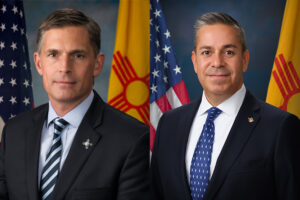
New Mexico U.S. Senators Heinrich and Lujan have key roles to play to ensure the Safety Board’s work continues unimpeded. https://www.heinrich.senate.gov/ and https://www.lujan.senate.gov/ Our voices of support are essential to ensure communities continue to receive the essential services of the Safety Board and its staff.
Right now members of the Safety Board’s staff are monitoring the venting of radioactive tritium from Area G at Los Alamos National Laboratory (LANL). Their expertise in the field of nuclear safety and their demonstrated competence and knowledge relevant to their independent investigative and oversight functions are an essential part of the process. They will be part of the follow-up once the venting of the four flanged tritium waste containers is completed. https://tewawomenunited.org/?s=tritium, https://www.ccwnewmexico.org/tritium, https://nuclearactive.org/
Not only does the Safety Board have staff at LANL, but also at Sandia National Laboratories in Albuquerque and at the Waste Isolation Pilot Plant, the burial site for plutonium contaminated nuclear weapons waste, near Carlsbad. https://ananuclear.org/facilities/
Russia suspected of helping North Korea build nuclear submarines, Seoul investigating
Analysts said such a technology transfer was plausible given Pyongyang’s support for Russia’s ongoing war in Ukraine
By Park Chan-kyong | September 18, 2025 scmp.com
South Korea is investigating reports that Russia has supplied North Korea with nuclear submarine reactor modules, a move analysts see as highly plausible and one that could mark a breakthrough in Pyongyang’s decades-long push for a nuclear powered navy…
Holy See tells nations at UN to end threat of nuclear weapons, even as deterrence
Amid a global arms race, ending the threat of nuclear war — and even the testing of nuclear weapons — is imperative, said the Holy See’s diplomat to the United Nations.
By Gina Christian, OSV News | September 8, 2025 catholicreview.org
Archbishop Gabriele G. Caccia, the Holy See’s U.N. permanent observer, shared his thoughts in a statement he delivered Sept. 4 at U.N. headquarters in New York, during the General Assembly High-level Plenary Meeting to Commemorate and Promote the International Day Against Nuclear Tests, observed that same day.
“The pursuit of a world free of nuclear weapons is not only a matter of strategic and vital necessity, but also a profound moral responsibility,” Archbishop Caccia in his remarks.
He pointed to the introduction of nuclear weapons — first detonated by the U.S. in 1945 over the Japanese cities of Hiroshima and Nagasaki, killing an estimated 110,000 to 210,000 people, during World War II — as unveiling to the world “an unprecedented destructive force.”
Historic peace vigil partially dismantled after Trump orders: ‘Take it down’
Law enforcement officials on Sunday removed parts of the White House Peace Vigil, which has sat just outside the White House for decades.
By Marissa J. Lang, The Washington Post | September 8, 2025 washingtonpost.com
But over the past week, it faced a new threat as Trump turned his attention to the vigil and federal officers picked apart the structure that shields protesters and their signs from the elements. The vigil is maintained by a rotating cast of volunteers who keep the protest going 24 hours a day, seven days a week.
On Friday, Brian Glenn, a correspondent for the conservative network Real America’s Voice, told the president during a gathering with reporters that there was “a blue tent” in front of the White House that was “an eyesore.” Trump initially said he was unaware of it, but he then quickly ordered its removal.
Photo by Sig. Chiocciola, Creative Commons: The White House Peace Vigil on March 30, 2025 staffed by volunteers, Philipos Melaku-Bello (left) and Joe Brown (right).
For 80 years, nuclear weapons have been the unused threat
Amid a global arms race, ending the threat of nuclear war — and even the testing of nuclear weapons — is imperative, said the Holy See’s diplomat to the United Nations.
By Matt Kelly, mkelly@virginia.edu, September 3, 2025 news.virginia.edu
In the 80 years since World War II, which ended with the use of two atomic bombs, the world has maintained a tenuous relationship with nuclear weapons.
Philip Potter, professor of public policy at the University of Virginia’s Frank Batten School of Leadership and Public Policy and director of the National Security Data and Policy Institute, said he worries about the current delicate nuclear balance.
“Eighty years of non-use is the product of both good diplomacy and a recognition of the potential consequences,” Potter said. “The fearsome power of nuclear weapons causes countries pause before they use them, but a great deal of work has also gone into nonproliferation and the management of crises to keep them away from the nuclear brink. In some ways the dynamics of the Cold War made managing the potential for nuclear confrontation easier.”
It’s a very different strategic scenario now, where there are nine nuclear powers and less capacity to manage them.
A House of Dynamite review – Kathryn Bigelow’s nuclear endgame thriller is a terrifying, white-knuckle comeback
★★★★★: Amid a global arms race, ending the threat of nuclear war — and even the testing of nuclear weapons — is imperative, said the Holy See’s diplomat to the United Nations.
By Peter Bradshaw, The Guardian | September 2, 2025 theguardian.com
Kathryn Bigelow has reopened the subject that we all tacitly agree not to discuss or imagine, in the movies or anywhere else: the subject of an actual nuclear strike. It’s the subject which tests narrative forms and thinkability levels.
Maybe this is why we prefer to see it as something for absurdism and satire – a way of not staring into the sun – to remember Kubrick’s (brilliant) black comedy Dr Strangelove, with no fighting in the war room etc, rather than Lumet’s deadly serious Fail Safe.
NEW UPDATED INFORMATION: MUST READ!!! PROVIDED BY: THE TULAROSA BASIN DOWNWINDERS CONSORTIUM — WHAT TO KNOW ABOUT THE COMPENSATION AVAILABLE THROUGH THE RECA PROGRAM
 SEEKING JUSTICE FOR THE UNKNOWING, UNWILLING, AND UNCOMPENSATED INNOCENT VICTIMS OF THE JULY 16, 1945 TRINITY BOMB
SEEKING JUSTICE FOR THE UNKNOWING, UNWILLING, AND UNCOMPENSATED INNOCENT VICTIMS OF THE JULY 16, 1945 TRINITY BOMB
A Message From Tina
The DOJ is now accepting claims and has provided guidance on the claims process. They will only accept mail in claims at this time. They have indicated that an electronic process will be implemented by the end of the year. For more information you can go to the DOJ website at: https://www.justice.gov/civil/reca
Please be careful when supplying documentation via the regular mail. If you decide to file this way you may want to send the documents via certified mail. Once the electronic process begins it will be easier to assure that your documents are safe and being handled properly with little to no risk.
There are organizations/attorneys who are soliciting people to file claims with them. They use all sorts of tactics to get people to believe their services are necessary and often guarantee results. Please be aware that if an entity files a RECA claim on your behalf they will charge a fee. They receive the check, deduct their fee, and then pay you.
There will be Radiation Exposure Screening and Education Program (RESEP) clinics in our State that will assist people with claims. The claims process is not necessarily difficult and we’ll be training people to assist with the application process when needed. We’ll also be looking to government agencies to cooperate in locating necessary documentation for the application process. PLEASE DO NOT TURN OVER YOUR RECORDS TO ANYONE THAT YOU ARE NOT SURE ABOUT. You can remain updated about the application process, the training we’re going to organize or other questions you might have by going to our website at: www.trinitydownwinders.com
What does the expansion of RECA do?
The Radiation Exposure Compensation Act program has been re-authorized and extended through Dec 31, 2028 but the application deadline is Dec 31, 2027.
Downwinders who lived in New Mexico for one year from 1944 through Nov. 1962 will be eligible and family members can apply on behalf of a deceased loved one.
There are 19 cancers that are covered by the expansion.
The cancers covered are:
Leukemia (except chronic lymphocytic Leukemia); Lymphoma (other than Hodgkins); Primary cancers of the Thyroid, Breast, Esophagus, Stomach, Pharynx, Small Intestine, Pancreas, Bile Duct, Gall Bladder, Salivary Gland, Urinary, Bladder, Brain, Colon, Ovary, Liver (unless cirrhosis/Hepatitis B present), and Lung.
Compensation for downwinders will be increased to $100,000 and Downwind coverage is expanded to cover the entire state of New Mexico
Coverage for uranium miners and workers would be expanded:
To workers through Dec 31, 1990
To core drillers and remediation workers
To cover additional kidney disease for uranium miners
To allow for combined work histories
What does this mean?
This is the biggest expansion of RECA in the history of the program and it wouldn’t have happened without the tireless advocacy of Senator Lujan, Representative Leger Fernandez, Senator Heinrich, Representative Stansbury and Representative Vasquez.
While it is a significant win, it still leaves out many impacted communities, including the parts of Nevada and Arizona not previously covered, along with Montana, Colorado, and Guam.
The 2-year extension will likely not be adequate time to get all the people in New Mexico who qualify enrolled and this bill does not have health care benefits for Downwinders. We will continue to fight for a longer extension and the addition of healthcare benefits. This is an important first step because it reinstates the program keeping it operational so people can continue to apply for benefits and get the help they need, and it shows that expansion is possible and provides an opportunity to address concerns raised about the cost of expansion.
We are grateful for the win and consider this a big step in the right direction. We look forward to the day that claims are successfully filed and the people of New Mexico begin to see the benefit of the expansion of RECA. Stay tuned for updates and many thanks to all of you who have stood together with us in this fight!Continue reading
Threads cast and crew suffered ‘trauma’ after film
The creators of a documentary about the making of nuclear apocalypse film Threads say many of the cast and crew had “suffered with the trauma of being involved”.
By Chloe Aslett, BBC News | August 29, 2025 bbc.com
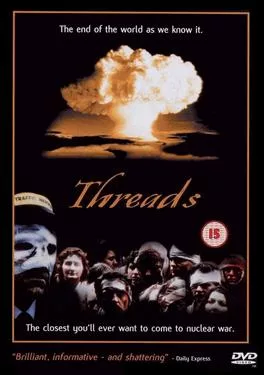
Threads, which tracks the aftermath of a nuclear attack on Sheffield, was first screened on the BBC on 23 September 1984 and fast became a cult classic.
Now filmmakers Craig Ian Mann and Rob Nevitt have spoken to more than 50 people involved in the making of the film for their documentary Survivors: The Spectre of Threads.
Mr Mann said: “[Threads] is a film that more than any I can think of everybody who worked on it it has impacted their lives in some way or another. Sometimes very positively and sometimes somewhat negatively.”
“There are people who have suffered the trauma of having been in and seen Threads,” he told BBC Radio Sheffield.
“There’s one participant in the documentary who has become a Doomsday prepper.
“He lives in America and has a bunker and canned food and weapons and he is prepared for the end of the world at any moment and that’s because he was in and saw Threads.”
Trump wants to stop nuclear proliferation. STRATCOM could play a major role.
Henry Sokolski, executive director of the Nonproliferation Policy Education Center, argues that the US needs to carry a new “big stick.”
By Henry Sokolski, Breaking Defense | August 29, 2025 breakingdefense.com

Last Monday, President Donald Trump pronounced, “We can’t let nuclear weapons proliferate.” Two days later, Secretary of State Rubio met with International Atomic Energy Agency (IAEA) Director General Rafael Mariano Grossi and recommitted the United States to preventing the proliferation of nuclear weapons.
After America’s bombing of Iran’s suspect nuclear sites, there’s cause to take these commitments seriously, but only if it’s more than a one off.
Emphasizing consistency is essential. Historically, America has backed nonproliferation in fits and starts. Under Presidents Gerald Ford and Jimmy Carter, the United States opposed the recycling of plutonium for commercial use because it was too close to bombmaking. It blocked reprocessing activities in South Korea, Taiwan, and Brazil.
Nuclear News Archive – 2022
Listen and subscribe to Press the Button, a weekly podcast from Ploughshares Fund dedicated to nuclear policy and national security.
July 15 — In this episode, Michelle Dover, Abigail Stowe-Thurston and Tom Collina deliver a wonderful, incisive news segment summarizing the major gains and debates in the NDAA (and how the Kardashians are getting involved in nuclear issues!).
Suzanne DiMaggio is featured delving deep into the dynamics of the crises with Iran and North Korea. Suzanne also presents her powerful rationale for the new Quincy Institute, where she is chair of the board.
“Looking at the catastrophic failures in foreign policy over the past decades, it is clearly time for something new,” Suzanne says, “The times demand it…We have to change the narrative in this town.”
Listen, Subscribe and Share on iTunes · Spotify · SoundCloud · Google Play
Also available on ploughshares.org/pressthebutton
Zakaria: The cancerous consensus in today’s politicized Washington
The United States’ defense budget is out of control, lacking strategic coherence, utterly mismanaged, ruinously wasteful and yet eternally expanding… “We never expected to pass [a financial audit],” admitted then-Deputy Defense Secretary Patrick Shanahan.
BY FAREED ZAKARAIA | trib.com
You often hear that in these polarized times, Republicans and Democrats are deadlocked on almost everything. But the real scandal is what both sides agree on. The best example of this might be the defense budget. Last week, the Democratic House, which Republicans say is filled with radicals, voted to appropriate $733 billion for 2020 defense spending. The Republicans are outraged because they — along with President Trump — want that number to be $750 billion. In other words, on the largest item of discretionary spending in the federal budget, accounting for more than half of the total, Democrats and Republicans are divided by 2.3 percent. That is the cancerous consensus in Washington today.
America’s defense budget is out of control, lacking strategic coherence, utterly mismanaged, ruinously wasteful and yet eternally expanding.
Lindsey Graham joins legal fight to restart SC nuclear fuel plant (MOX)
U.S. Sen. Lindsey Graham is urging the nation’s highest court to take up what appears to be South Carolina’s final push to resuscitate a shuttered nuclear facility at the Savannah River Site and bolster federal rules tied to plutonium processing and long-term storage.
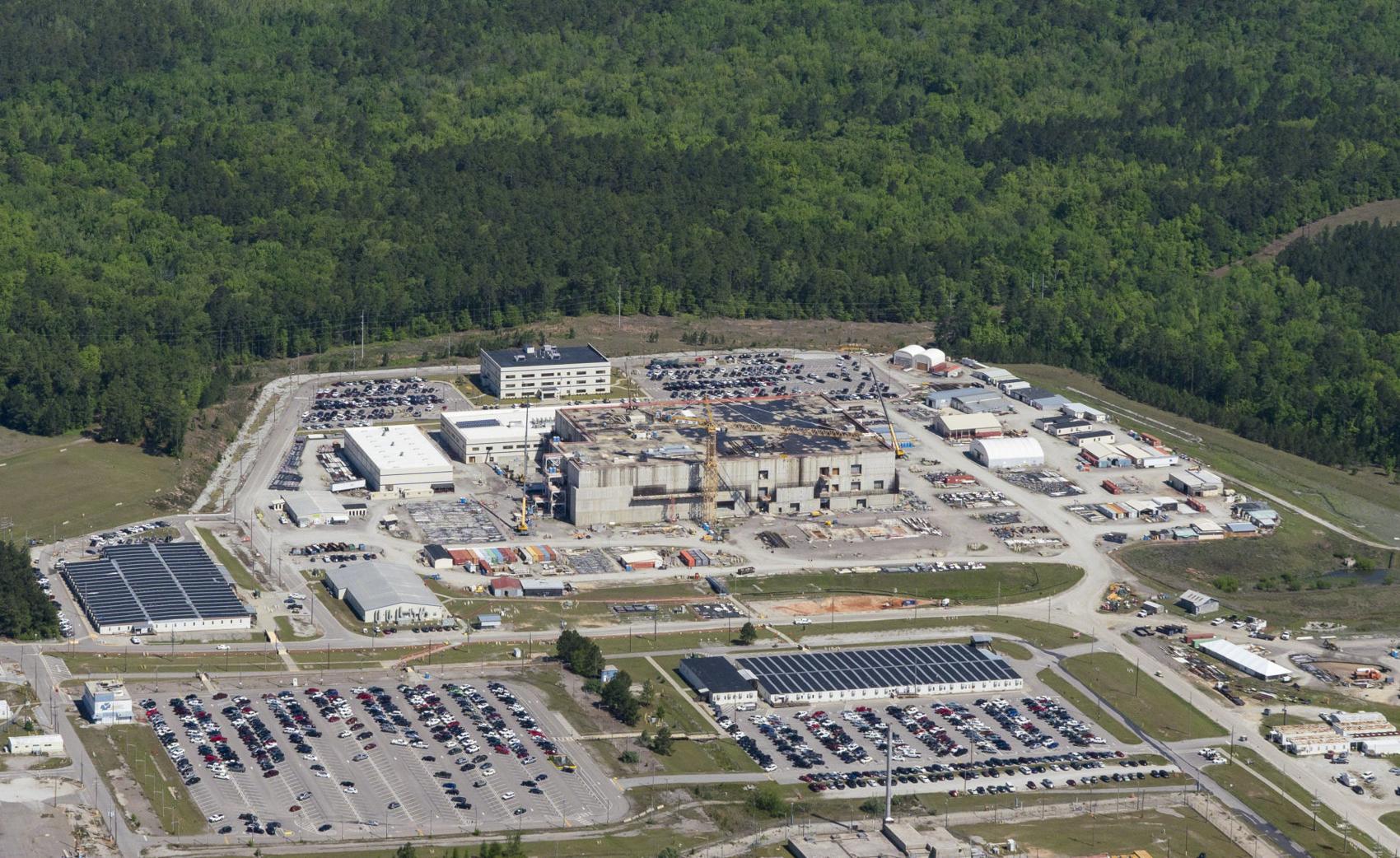
BY COLIN DEMAREST | postandcourier.com
Graham, a South Carolina Republican who chairs the Senate Judiciary Committee, argues that the federal government walked away from its obligation to address the plutonium stored in the Palmetto State. He addressed these concerns in a brief filed July 11 with the U.S. Supreme Court.
“The federal government previously made legally binding commitments to the state of South Carolina in recognition of its sovereign status and its proprietary interests,” Graham argued in the brief. “It has now breached those commitments, causing injury to the state that a court may redress.”
The brief describes Graham as “personally familiar” with the matters at hand and profoundly interested in the federal government’s promises to the state, which he was involved in negotiating.
Class Action Suit Draws Big Crowd – Portsmouth Gaseous Diffusion Plant
“DOE is simply not to be trusted. Period.”
— Carlos Williams speaking about local cancer concerns.
He has lived for thirty years five miles from the Portsmouth, Ohio uranium enrichment plant.
BY TOM CORRIGAN | PORTSMOUTH DAILY TIMES © 2019 Portsmouth Daily Times, all rights reserved.
Their stories were extremely varied. But many had one unfortunate commonality: cancer.
A small portion of the crowd which lined up and waited hours Tuesday in the OSU Endeavor Center in Piketon.Larry and Janie Williams describe themselves as being fence line neighbors of the Portsmouth Gaseous Diffusion Plant since 1972. When she began to fall ill somewhat over four years ago, Larry said his wife’s doctor asked how she had come to be exposed to radiation. Janie never worked at the Portsmouth plant but spoke of daily hearing the ongoing construction of the decommissioned plant’s controversial on-site waste disposal facility. Janie said she developed a type of cancer that attacked her blood. Treatment included extremely expensive stem cell transplants. The transplants did buy her some time, though she added doctors gave her three to five years of life.
“I’m in year four,” said Janie, who clearly is accepting of her situation and spoke of her story unabashedly. She is 63.
Why SC is likely stuck with a stockpile of the nation’s most dangerous nuclear materials
POST & COURIER SPECIAL REPORT: LETHAL LEGACY
BY THAD MOORE & COLIN DEMAREST | postandcourier.com
South Carolina could be stuck with a massive stockpile of the nation’s most dangerous nuclear material for decades, despite a federal mandate and years of promises that the state wouldn’t become America’s plutonium dumping ground.
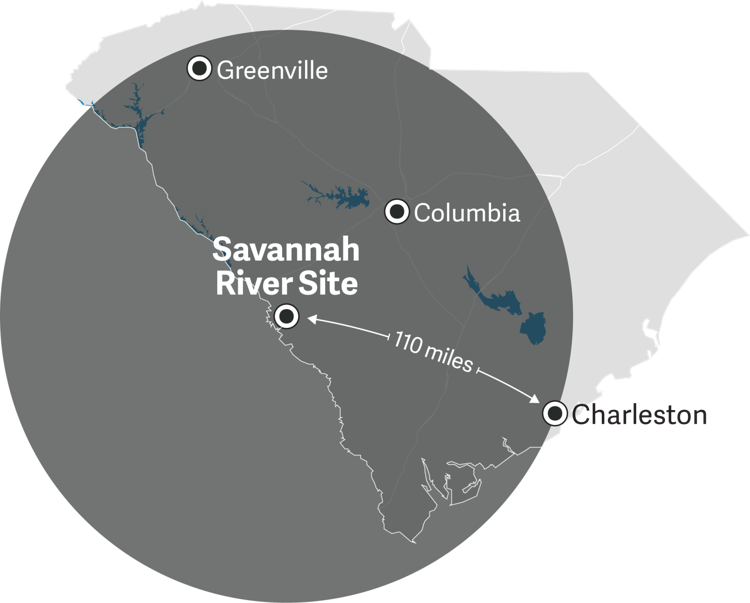 A restricted internal report obtained by the Aiken Standard and The Post and Courier suggests that the state is likely to become a long-term repository for enough plutonium to build the bomb dropped on Nagasaki nearly 2,000 times over.
A restricted internal report obtained by the Aiken Standard and The Post and Courier suggests that the state is likely to become a long-term repository for enough plutonium to build the bomb dropped on Nagasaki nearly 2,000 times over.
South Carolina faces this prospect despite a federal law that gives the U.S. Department of Energy just 2½ more years to remove its plutonium from the Savannah River Site, a huge swath of federal land along the Georgia border.
Hundreds gather in Piketon for town hall on alleged radioactive contamination
“[I] wanted to see what information is available,” Brandon Moore said. “What are we doing to help all these folks that are impacted or that may be impacted in the future?”
BY BRYANT SOMERVILLE. | 10tv.com
PIKETON, Ohio – People stood in line for hours, Tuesday, wanting to make sure they and their families were safe.
“I just want to make sure what’s going on if there was any contamination there or where we’re at,” Steve Copper said. “I want to make sure we got everything taken care of.”
“These materials are ounce-for-ounce the most dangerous materials known to man,” Stuart Smith said.
Smith is with Cooper Law Firm out of New Orleans. It was his firm that filed the lawsuit in May alleging Ohio residents near a former uranium enrichment plant in Piketon were exposed to radioactive contaminants that spread to other properties but were never informed.
Continue reading
Congress Introduces Legislation to Expand Compensation for Radiation Exposure
Luján, Members of Congress Introduce Legislation to Expand Compensation for Individuals Impacted by Radiation Exposure
Washington, D.C. – Today, Congressman Ben Ray Luján (D-N.M.), the U.S. House Assistant Speaker, introduced legislation to expand compensation for individuals exposed to radiation while working in and living near uranium mines or downwind from nuclear weapon test sites.
Tens of thousands of individuals, including miners, transporters, and other employees who worked directly in uranium mines, along with communities located near test sites for nuclear weapons, were exposed during the mid-1900s to dangerous radiation that has left communities struggling from cancer, birth defects, and other illnesses.

Trinity: “The most significant hazard of the entire Manhattan Project”
“New Mexico residents were neither warned before the 1945 Trinity blast, informed of health hazards afterward, nor evacuated before, during, or after the test. Exposure rates in public areas from the world’s first nuclear explosion were measured at levels 10,000- times higher than currently allowed.”
Final Report of the Los Alamos Historical Document and Retrieval and Assessment Project, Prepared for the Centers for Disease Control and Prevention, November 2010, pp. ES-34-35. VIEW HERE
Victims of the Trinity Test remain uncompensated, yet the Los Alamos Lab continues to expand plutonium pit production.
BY KATHLEEN M. TUCKER & ROBERT ALVAREZ | thebulletin.org
For the past several years, the controversy over radioactive fallout from the world’s first atomic bomb explosion in Alamogordo, New Mexico on July 16, 1945—code-named Trinity—has intensified. Evidence collected by the New Mexico health department but ignored for some 70 years shows an unusually high rate of infant mortality in New Mexico counties downwind from the explosion and raises a serious question whether or not the first victims of the first atomic explosion might have been American children. Even though the first scientifically credible warnings about the hazards of radioactive fallout from a nuclear explosion had been made by 1940, historical records indicate a fallout team was not established until less than a month before the Trinity test, a hasty effort motivated primarily by concern over legal liability.
Peace Activists Cut into Nuclear Weapons Base, Foiling Increased Security
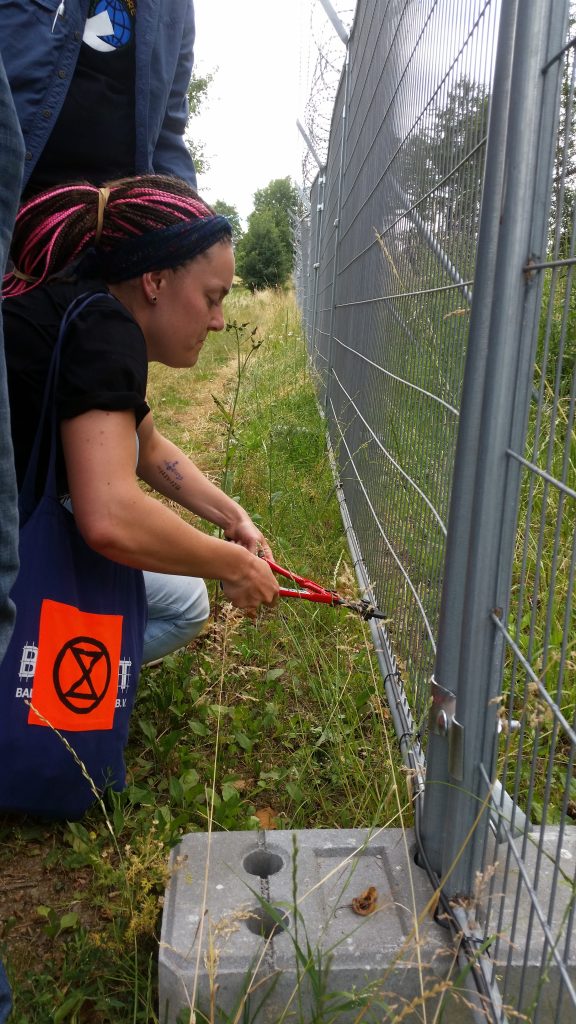
The Hoax That Nuclear Power is Green
This “Enviro Close-Up with Karl Grossman” demolishes the hoax that nuclear power is green. Continue reading
Wyoming lawmakers quietly explore storing spent nuclear fuel
Management Council votes by email to study housing spent nuclear fuel at Gas Hills, Shirley Basin to bring what a state senator says could be $1 billion a year.
Massive containers hold spent nuclear fuel at a dry storage facility. This photo shows, at right, a dry cask recently loaded with spent fuel being lifted from a horizontal transporter to be placed verticlaly on a specially designed storage pad. (Flickr Creative Commons/Sandia National Laboratories)ANGUS M. THEURMER JR. | wyofile.com
A legislative committee has appointed six of its members to investigate the idea with the U.S. Department of Energy, Sen. Jim Anderson (R-Casper) told WyoFile on Friday. Anderson is co-chairman of the Joint Minerals Business and Economic Development Committee which received approval and funding from the Legislative Management Council in an unannounced vote to study the issue before the next legislative session begins in early 2020.
Wyoming’s dependence on an ailing coal industry spurred talk about pursuing the temporary storage idea, Anderson said. Fuel rods would be housed in casks with two-foot-thick walls, he said.
US suspends low-level radioactive waste shipments to Nevada
BY SCOTT SONNER | time.com
(RENO, Nev.) — A Nevada congressman called for U.S. Energy Secretary Rick Perry’s resignation Wednesday after the department acknowledged multiple shipments of low-level radioactive waste to a site north of Las Vegas may have been mislabeled and out of compliance with safety regulations for years.
The department had announced earlier that shipments of the waste from Tennessee to Nevada have been suspended while it investigates whether the materials were “potentially mischaracterized” as the wrong category of low-level waste. Low-level waste can include equipment or worker’s clothing contaminated by exposure to radiation, while mixed low-level waste can include toxic metals.
America’s Indefensible Defense Budget
BY JESSICA T. MATTHEWS | nybooks.com
The sheer size of the military establishment and the habit of equating spending on it with patriotism make both sound management and serious oversight of defense expenditures rare.
As a democracy, we are on an unusual and risky path.
For several decades, we have maintained an extraordinarily high level of defense spending with the support of both political parties and virtually all of the public. The annual debate about the next year’s military spending, underway now on Capitol Hill, no longer probes where real cuts might be made (as opposed to cuts in previously planned growth) but only asks how big the increase should be.
NMED won’t move LANL Oversight Bureau office from Los Alamos
“New Mexico Environment Department (NMED) Secretary James Kenney and other members of the department’s staff held a public meeting July 8 to address fears that NMED would move the Los Alamos National Lab (LANL) Oversight Bureau field office out of Los Alamos.
In June, the department announced a proposal to move the field office to a Santa Fe location. The news was met with immediate backlash from LANL watchdog groups such as Concerned Citizens for Nuclear Safety and Nuclear Watch New Mexico.”
By Kendra Chamberlain | nmpoliticalreport.com
The department held the meeting, the first of a series of public outreach events the department plans to hold this year throughout the state, in part to assuage public concerns around the future of the Oversight Bureau’s field office in Los Alamos.
In June, the department announced a proposal to move the field office to a Santa Fe location. The news was met with immediate backlash from LANL watchdog groups such as Concerned Citizens for Nuclear Safety and Nuclear Watch New Mexico.
Kenney, along with Resource Protection Division director Stephanie Stringer and Administrative Services Division director Michelle Desmond, explained some of the factors behind the contemplated move in a short presentation to audience members.
“[There] was never the intent to decrease oversight, or lessen any compliance or enforcement [over LANL],” Stringer told audience members.
“A lot of people [thought] when they heard we were moving off the hill, that it meant less oversight. There is no doubt in my mind that Secretary Kenney has made it my job to absolutely make sure compliance and enforcement and oversight of these facilities are top priority,” she said.
Iran’s Uranium Enrichment Breaks Nuclear Deal Limit. Here’s What That Means
Vahid Salemi/AP
BY GEOFF BRUMFIEL | npr.org July 7, 2019
Iran has crossed another line set in the 2015 nuclear deal between it and major world powers.
According to state media, Iran has begun enriching uranium above levels enshrined in the agreement. The move sends a signal that Iran is losing patience with a deal that has not provided the economic relief promised, more than a year after the United States withdrew from the agreement.
By Monday, Iran had reached levels of around 4.5% enrichment, Behrouz Kamalvandi, the spokesman for the Atomic Energy Organization of Iran, told the semiofficial Fars news agency. He warned that Iran could go as high as 20% in the future, though that level is “not needed now.”
Inspectors from the International Atomic Energy Agency confirmed that Iran has crossed the line.
What public engagement?
This article was originally published July 6, 2019 in the Santa Fe New Mexican
Article Written by NukeWatch NM Volunteer: ALICIA SANDERS-ZAKRE
The Department of Energy’s new attempt at “enhanced public engagement” on legacy nuclear waste cleanup at Los Alamos National Laboratory failed both its stated objectives to consider public input and provide public education. To turn things around, officials should actually listen to public attendees and provide complete information at future meetings.
In the two-hour June 26 forum in Los Alamos, officials from the department’s Environmental Management Los Alamos Field Office, alongside N3B, the contractor tasked with implementing the cleanup, repeatedly proclaimed their interest in hearing from the public and pledged total transparency, but they didn’t give anyone in the packed room a chance to speak.
Renewables Catching Nuclear Power In Global Energy Race
Coal is still the dominant source of electricity around the world, although natural gas has taken over the top spot in the U.S. But, renewables have grown rapidly over the past decade, and are on the cusp of overtaking nuclear globally.
From 2007 to 2017, the Renewables category grew at an average annual rate of 16.4%. But within that category, power from geothermal and biomass grew at an annual average of 7.1%. Wind and solar power, by contrast, grew at an annual average of 20.8% and 50.2%, respectively, over the past decade.
In 2018, nuclear power was responsible for 2,701 Terawatt-hours (TWh) of electricity generation, compared to 4,193 TWh for hydropower and 2,480 for renewables.
RCLC Hears Talk On Nuclear Fuel Storage Facility
The Regional Coalition of LANL Communities (RCLC) Board met Thursday in Española.
Scott Kovac of Nuclear Watch New Mexico expressing his concerns during the public comment portion of Thursday’s meeting. Photo by Carol A. Clark/ladailypost.comBY BONNIE J. GORDON | ladailypost.com
The meeting included a presentation by Holtec International Program Director Ed Mayer describing the safety features of a proposed storage site in southern New Mexico should the Nuclear Regulatory Commission issue the New Jersey-based company a 40-year license. If that happens, Holtec would build a multibillion-dollar site to temporarily store spent nuclear fuel from commercial reactors around the United States.
“Our job is to prove the facility is safe and secure,” Mayer said.
New Mexico Appeals Court Expects Waste Volume Status Report Soon
BY EXCHANGE MONITOR | exchangemonitor.com
The New Mexico Court of Appeals expects a status report by July 31 on mediation between the parties in litigation over changes to the way the Department of Energy calculates the underground volume of transuranic material at its Waste Isolation Pilot Plant (WIPP) near Carlsbad.
The mediation began last month between representatives of DOE, the New Mexico Environment Department, and the advocacy groups Nuclear Watch New Mexico and the Southwest Research and Information Center (SRIC). The state appeals court routinely requires parties to go to mediation in cases involving state agencies before a lawsuit proceeds to trial, says Don Hancock, director of the SRIC nuclear waste safety program. He declined to elaborate on the status of mediation.
US arms control office critically understaffed under Trump, experts say
State department office whittled down in staff numbers from 14 at start of administration to four as Trump shifts approach
The US national security adviser, John Bolton, is widely seen as a lifelong opponent of arms control agreements. Photograph: Oded Balilty/APBY JULIAN BORGER | theguardian.com
A state department office tasked with negotiating and implementing nuclear disarmament treaties has lost more than 70% of its staff over the past two years, as the Trump administration moves towards a world without arms control for the first time in nearly half a century.
The Office of Strategic Stability and Deterrence Affairs, normally a repository of expertise and institutional knowledge that does the heavy lifting of arms control, has been whittled down from 14 staffers at the start of the Trump administration to four, according to the former staffers.
Nuke-Backing NDAA Passes Senate in Landslide

Graham and Heinrich double down on pit production and Safety Board threatened by Senate bill
BY DAN LEONE | exchangemonitor.com
The U.S. Senate on Thursday overwhelmingly passed a 2020 National Defense Authorization Act (NDAA) that would authorize all the White House’s requested funding for nuclear modernization programs at the Department of Energy and the Pentagon.
The Senate bill would provide a year of bipartisan support for the Donald Trump administration’s nuclear arsenal modernization plans, which are essentially a lightly modified continuation of the 30-year refurbishment the Barack Obama administration started in 2016.
In stark contrast, the House’s version of the NDAA — up for floor debate as soon as the week of July 8 — eyes major changes for the decades-long arsenal refresh by slowing work on nuclear-tipped intercontinental ballistic missile (ICBM) programs at DOE and the Defense Department.
Tribute to Robert L. Peurifoy
A tribute to the nuclear weapons career of the late Robert L. Peurifoy (1928-2017) was recently posted HERE
Bob Peurifoy worked at the Sandia Labs for 39 years, serving as director of nuclear weapon development and retiring as a vice president. He was the driving force behind many safety improvements to U.S. nuclear weapons and a strong believer in conservative maintenance of the stockpile. Bob was also a strong critic of aggressive Life Extension Programs that further diverged the stockpile from its tested pedigree and wasted taxpayers’ money. As Bob’s friend and colleague Gordon Moe puts it, “Bob’s family and I hope that Bob’s wisdom and reason as reflected in the Tribute will continue to benefit humanity for many more years through its use as a reference by researchers in the field of nuclear weaponry.”
VIEW FULL TRIBUTE – PDF
A synopsis of the full tribute was written by Gordon Moe, Puerifoy’s fellow Sandia scientist, colleague and friend –
VIEW TRIBUTE SYNOPSIS
Kick-Off For Public Participation In LANL Legacy Waste Cleanup Draws Large Crowd At Fuller Lodge
BY MAIRE O’NEILL | losalamosreporter.com
The message was clear at Wednesday evening’s Environmental Management Cleanup Forum at Fuller Lodge hosted by the Department of Energy’s Environmental Management Los Alamos (EM-LA) Field Office and legacy cleanup contractor N3B. That message, according to EM-LA manager Doug Hintze was that the Department of Energy is changing its way of doing business as far as community participation.
Jay Coghlan, NukeWatch NM Director, said about the meeting: “They had too much of an opportunity to control the questions through written submissions and pick and choose what they want. Future meetings should be quite different with open and free discussion,” he said. “I’m fully-prepared to push for the transparency that they claim that they’re operating with.”
“We’re not asking for input – you’ve been giving us input. We’re asking for participation to make sure you understand the risks that we have, the challenges including funding, the cleanup standards and so forth. We’re asking for your participation,” he told a packed room.
N3B’s Regulatory and Stakeholder Interface Manager Frazer Lockhart addresses a large crowd Wednesday evening at Fuller Lodge during a forum on legacy waste at Los Alamos National Laboratory. Photo by Maire O’Neill/losalamosreporter.com Department of Energy Environmental Management Los Alamos Field Office Manager Doug Hintze, left, speaks with New Mexico Environment Department Secretary James Kinney Wednesday evening at Fuller Lodge. Photo by Maire O’Neill/losalamosreporter.comCoghlan told the Los Alamos Reporter that EM-LA “have repeated rhetoric for full and complete transparency.
“They’re making the claim that more than half the cleanup is completed. This of course is representative of hidden decisions already made to leave behind the vast majority of waste. So this meeting was just a complete sham and it was carefully controlled really, to make it all look warm and fuzzy when it’s not,” he said.
Group seeking stormwater regulations in Los Alamos County plans to sue EPA
“An environmental group said it intends to sue the federal Environmental Protection Agency for failing to determine whether stormwater from Los Alamos County should be regulated by a federal pollution permit under the Clean Water Act.”
BY REBECCA MOSS | santafenewmexican.com
Pollutants — including mercury, copper, cyanide, gross alpha radiation and PCB chemicals — have been detected well above human health and state water quality standards in stormwater runoff samples, attorneys for Taos-based Amigos Bravos said in a letter Wednesday to EPA Administrator Andrew Wheeler and David Gray, acting regional administrator.
According to the letter, levels of PCBs, linked to liver and thyroid cancer and reproductive damage, have been detected at levels thousands of times greater than state standards. Runoff from rain or melting snowpack carries metals and chemicals through the finger-like canyons that surround Los Alamos National Laboratory and urban areas of the county.
Amigos Bravos, a water conservation group, petitioned the EPA nearly five years ago to determine whether the water quality violations in Los Alamos County required a federal permit. Such permits are used to enforce water quality standards and keep pollution below certain levels.
Dangerous chromium plume closer to Los Alamos County well
Chemical contamination more than four times the state limit was detected late last month at the edge of a plume in the aquifer roughly 1,000 feet below Los Alamos National Laboratory.
BY REBECCA MOSS | santafenewmexican.com June 21, 2019
It is the closest high-level measurement of hexavalent chromium detected near the well used to pump drinking water to Los Alamos County, roughly a third of a mile away.
“Our drinking water supply is safe, and we are vigilantly working to keep it that way,” said Tim Glasco, utilities manager for Los Alamos County.
Hexavelent chromium, an industrial chemical tied to lung and other cancers, was found pooled below Sandia and Mortandad canyons in 2005, and environmental managers have since been working to define the full scope of the contamination. It spans at least a mile long and half-mile wide, and abuts San Ildefonso Pueblo.
"If a nuclear weapon were to explode right now, what would you choose? Live or die?" Over the course of a brutally honest conversation between two friends, the International Committee of the Red Cross' (ICRC) powerful short film shows the catastrophic humanitarian impact of nuclear weapons, the psychological trauma which would inevitably result from their use - and why we need to ban them. So powerful, in fact, that it just won a Bronze Lion at the Cannes Lions Festival, one of the highest recognitions in the creative and advertising industry!
At ICAN works closely with the ICRC and celebrates their work to raise awareness about the unacceptable humanitarian impact of nuclear weapons and the need for all countries to join the UN Treaty on the Prohibition of Nuclear weapons.
Powerful storytelling like this will help open eyes all over the world. Help us spread this message further:
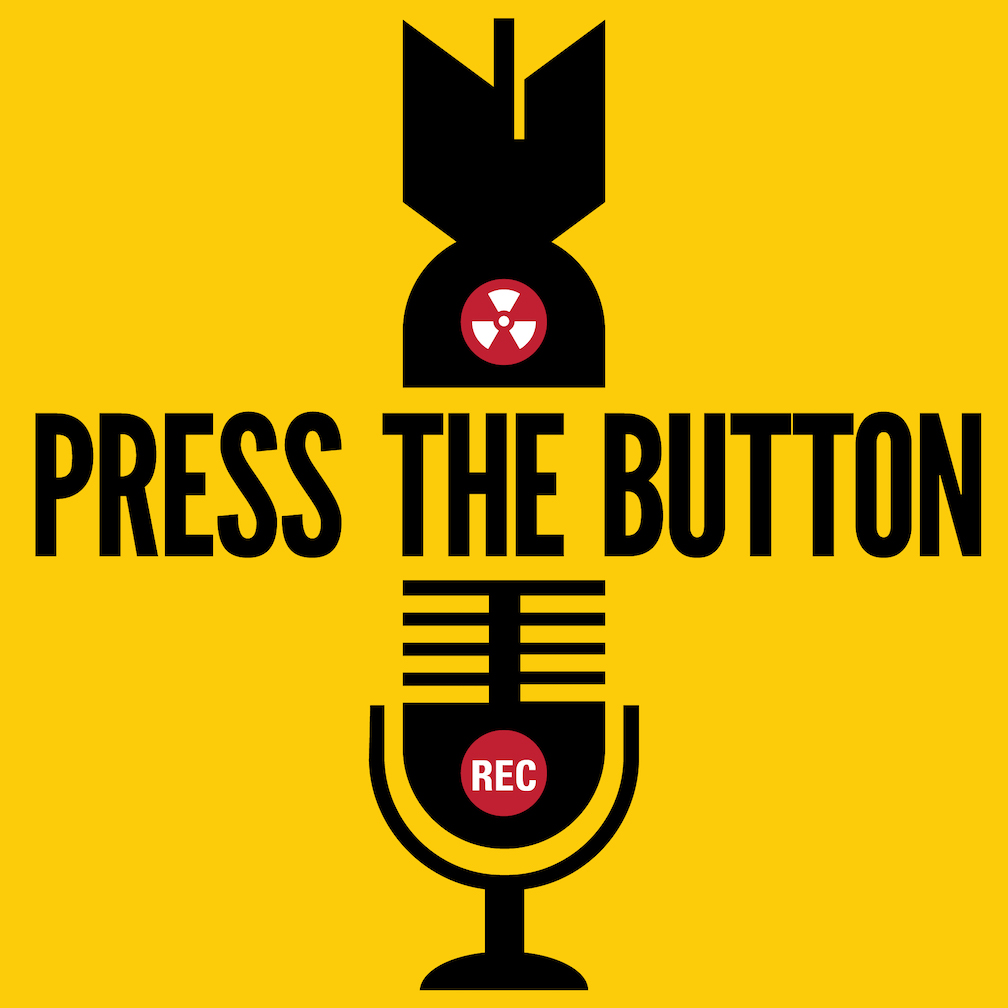 Daniel Ellsberg, author of The Doomsday Machine: Confessions of a Nuclear War Planner, anti-war activist and former US military analyst famous for releasing the Pentagon Papers in 1971, joins Joe Cirincione for a rare in-depth interview. Daniel discusses what he learned about US nuclear strategy during his time working at the RAND Corporation and the Pentagon, the use of deterrence theory to justify current nuclear arsenals, and the morality of threatening nuclear war.
Daniel Ellsberg, author of The Doomsday Machine: Confessions of a Nuclear War Planner, anti-war activist and former US military analyst famous for releasing the Pentagon Papers in 1971, joins Joe Cirincione for a rare in-depth interview. Daniel discusses what he learned about US nuclear strategy during his time working at the RAND Corporation and the Pentagon, the use of deterrence theory to justify current nuclear arsenals, and the morality of threatening nuclear war.
Also: Early Warning nuclear news analysis with Ploughshares Fund Deputy Director of Policy Mary Kaszynski and Roger L. Hale Fellow Catherine Killough https://www.ploughshares.org/pressthebutton
Listen and subscribe on libsyn
Executed for being an anti-nuclear activist
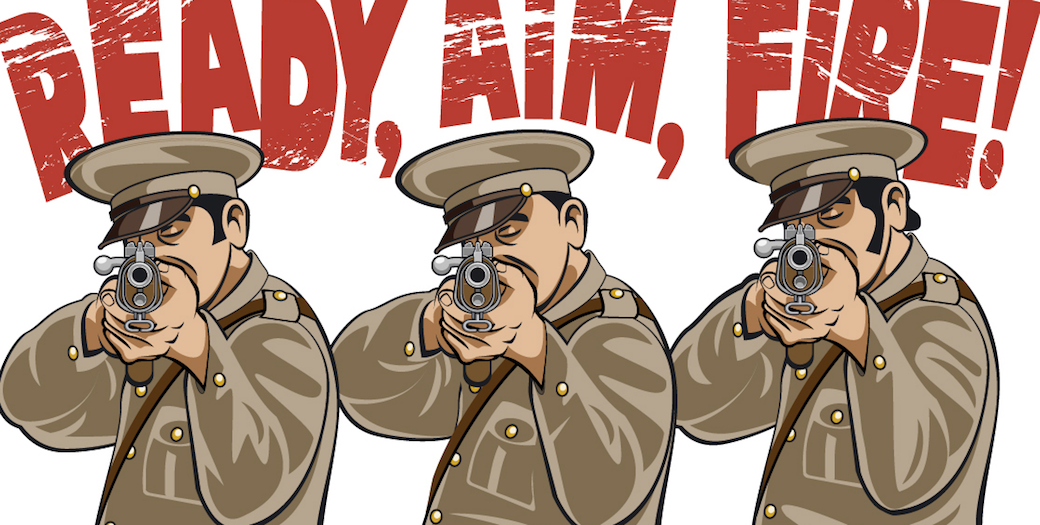
The incredible unknown story of “nuclear martyr” Nikos Nikiforidis
On March 5, 1951, 22-year-old Nikos Nikiforidis was executed in Greece because he was promoting the Stockholm Antinuclear Appeal (1950). Honoring his death, Greek IPPNW and PADOP organized an event this March in Athens to commemorate him and his courage. Below is an amalgamation of two presentations given about Nikiforidis at that event.
BY MARIA ARVANITI SOTIROPOULOU & PANOS TRIGAZIS | beyondnuclearinternational.org
Under present conditions, it seems inconceivable that a 22-year-old fighter for the anti-nuclear movement was arrested, sentenced to death by court martial and executed in Thessaloniki, on a charge of collecting signatures under the Stockholm Appeal for the abolition and prohibition of all nuclear weapons. But Nikos Nikiforidis was the first person (and perhaps also the only one) in the world to suffer such a fate.
At that time, the cold war was at its height on the international stage, and Greece was geographically on the border of the two worlds, the prevailing doctrine of its foreign policy being the “threat from the north”.
New Mexico land boss concerned with nuclear waste proposal
BY SUSAN MONTOYA BRYAN | apnews.com
ALBUQUERQUE, N.M. (AP) — State Land Commissioner Stephanie Garcia Richard says southeastern New Mexico, which is home to one of the world’s most prolific oil and gas basins, is not the right place for storing spent nuclear fuel.
In a letter to Holtec International, she outlined her concerns about plans to build a multibillion-dollar facility that would be capable of temporarily storing tons of high-level radioactive waste from commercial reactors around the U.S.
Nearly 2,500 oil and gas wells and other mineral developments operated by dozens of different businesses are located within a 10-mile (16-kilometer) radius of the proposed site. Garcia Richard contends that storing the waste above active oil, gas and mining operations raises serious safety concerns.
She accused the company of not addressing the potential safety issues and suggested that it hasn’t been forthcoming in its filings with the Nuclear Regulatory Commission, which is considering whether to issue a 40-year license for the facility.
“There is no guarantee that high-level nuclear waste can be safely transported to and through New Mexico. There is no guarantee that there won’t be a hazardous interaction between the storage site and nearby oil, gas and mining activities. There is no guarantee that this site will truly be ‘interim’ and won’t become the permanent dumping ground for our nation’s nuclear waste,” she said in a statement.
Holtec International has argued that the federal government has unmet obligations to find a permanent solution for dealing with the tons of waste building up at nuclear power plants and the proposed facility is needed.
LANL cleanup costs continue piling up
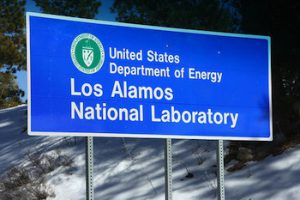
The U.S. Department of Energy in 2016 drafted a list of 17 projects at Los Alamos National Laboratory and in the surrounding town to clean up soil and groundwater that remained contaminated decades after the Manhattan Project and Cold War nuclear weapons work.
At the time, more than $2 billion had been spent in a decade on environmental cleanup projects. The Department of Energy estimated it would cost another $1.1 billion to $1.5 billion to finish the job — and up to 25 more years.
The work is far from complete.
Jay Coghlan, director of Nuclear Watch New Mexico, said cleanup costs have been “woefully underestimated,” and that an updated cost analysis is overdue.
New Mexico Is Divided Over The ‘Perfect Site’ To Store Nation’s Nuclear Waste
“Why should we be the ones to take this negative project on and put up with the consequences?” says Rose Gardner, a florist who lives 35 miles from the proposed site. “We know it’s supposed to be consent-based. They’re not getting consent. The actual people aren’t for it. And without community support, it won’t go.”
BY NATHAN ROTT | npr.org (originally published April 11, 2019)
Thirty-five miles out of Carlsbad, in the pancake-flat desert of southeast New Mexico, there’s a patch of scrub-covered dirt that may offer a fix — albeit temporarily — to one of the nation’s most vexing and expensive environmental problems: What to do with our nuclear waste?
Despite more than 50 years of searching and billions of dollars spent, the federal government still hasn’t been able to identify a permanent repository for nuclear material. No state seems to want it.
So instead, dozens of states are stuck with it. More than 80,000 metric tons of spent nuclear fuel, a still-radioactive byproduct of nuclear power generation, is spread across the country at power plants and sites in 35 states.
The issue has dogged politicians for decades. Energy Secretary Rick Perry recently described the situation as a “logjam.” But some hope that this remote, rural corner of New Mexico may present a breakthrough.
Public Hearing on Safety Management of Waste Storage and Processing in the Defense Nuclear Facilities Complex
The Defense Nuclear Facilities Safety Board (DNFSB) held a public hearing on June 20th at its Washington, DC Headquarters. The DNFSB’s goals for the hearing were (1) to discuss Department of Energy (DOE) actions to strengthen the safety posture of solid waste operations and (2) gather information on safety controls to address the vulnerabilities associated with handling and processing solid nuclear wastes.
The Live Stream of the Hearing can be seen here: http://stream.sparkstreetdigital.com/20190620-dnfsb.html?id=20190620-dnfsb
The Board will hold the hearing record open until the close of business on July 20, 2019.
Members of the public can submit written comments to hearing@dnfsb.gov until July 20.
Nuclear Waste Storage Concerns Raised By Panel Members During Santa Fe Forum
BY MAIRE O’NEILL
maire@losalamosreporter.com
Multiple concerns were raised by panel members Wednesday June 21, 2019 during a forum on nuclear waste in the state of New Mexico hosted by the Santa Fe Democratic Party Platform and Resolutions Committee at the Center for Progress and Justice in Santa Fe.
Land Commissioner Garcia Richard said her office has direct oversight of mineral leasing at the proposed Holtec site. She made public a letter she sent to the Nuclear Regulatory Commission expressing her concerns about representations made by Holtec to the NRC and New Mexicans about its control of the proposed site as well as agreements it claims to have secured from the state Land Office. She said while the Eddy-Leah County Energy Alliance LLC privately owns the surface of the proposed site, the State Land Office owns the mineral estate and that has not been disclosed by Holtec.
Hypersonic Missiles Are Unstoppable. And They’re Starting a New Global Arms Race.
How hypersonic missiles — which travel at more than 15 times the speed of sound — are touching off a new global arms race that threatens to change the nature of warfare.
[T]he new document “is very much conceived as a war-fighting doctrine – not simply a deterrence doctrine, and that’s unsettling”. – Steve Aftergood of the Federation of American Scientists, who downloaded and publicized the new policy document before the Pentagon pulled it from the internet.
BY R. JEFFREY SMITH | publicintegrity.org (This story was published in partnership with The New York Times Magazine.)
On March 6, 2018, the grand ballroom at the Sphinx Club in Washington was packed with aerospace-industry executives waiting to hear from Michael D. Griffin. Weeks earlier, Secretary of Defense James Mattis named the 69-year-old Maryland native as the Pentagon’s under secretary for research and engineering, a job that comes with an annual budget of more than $17 billion. So the dark-suited attendees at the McAleese/Credit Suisse Defense Programs Conference were eager to learn what type of work he would favor.
Nuclear weapons: experts alarmed by new Pentagon ‘war-fighting’ doctrine
US joint chiefs of staff posted then removed paper that suggests nuclear weapons could ‘create conditions for decisive results’
[T]he new document “is very much conceived as a war-fighting doctrine – not simply a deterrence doctrine, and that’s unsettling”. – Steve Aftergood of the Federation of American Scientists, who downloaded and publicized the new policy document before the Pentagon pulled it from the internet.
theguardian.com | The Pentagon believes using nuclear weapons could “create conditions for decisive results and the restoration of strategic stability”, according to a new nuclear doctrine adopted by the US joint chiefs of staff last week.
The document, entitled Nuclear Operations, was published on 11 June, and was the first such doctrine paper for 14 years. Arms control experts say it marks a shift in US military thinking towards the idea of fighting and winning a nuclear war – which they believe is a highly dangerous mindset.
“Using nuclear weapons could create conditions for decisive results and the restoration of strategic stability,” the joint chiefs’ document says. “Specifically, the use of a nuclear weapon will fundamentally change the scope of a battle and create conditions that affect how commanders will prevail in conflict.”
Deb Haaland & New Mexico Land Commissioner Letters of Opposition to Holtec
| New Mexico Land Commissioner’s Letter of Opposition to Holtec | New Mexico Rep. Deb Haaland’s Letter of Opposition to Holtec |
Government watchdog finds 3 issues disrupting US nuclear modernization efforts
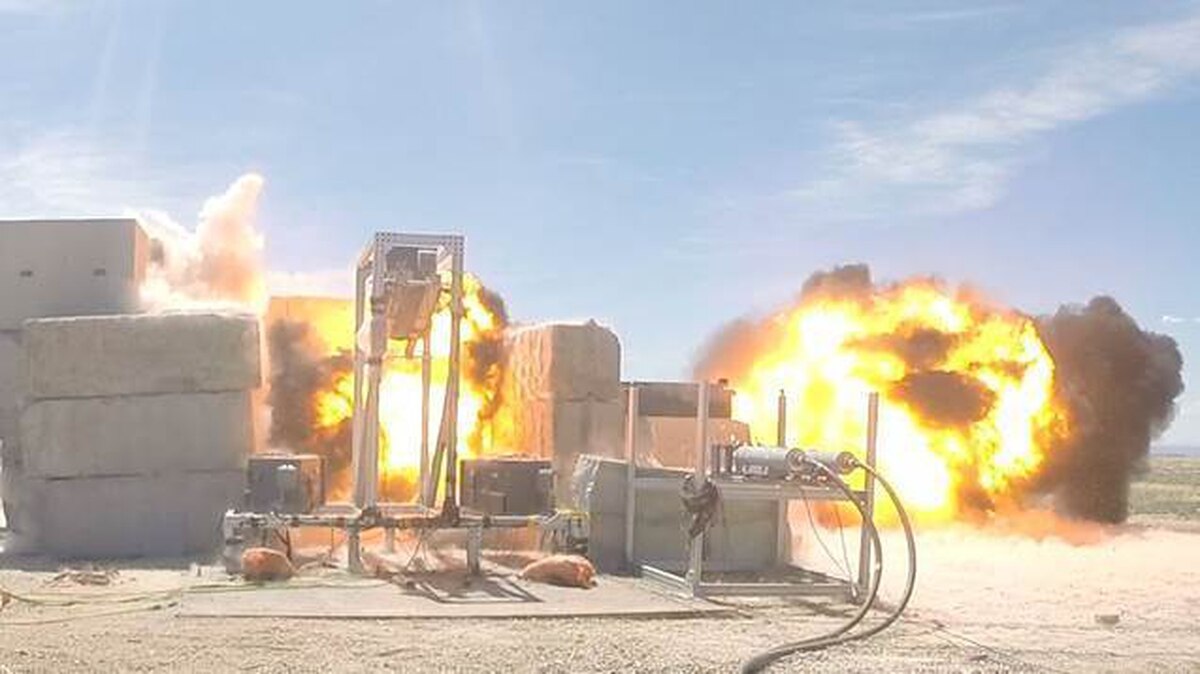
BY KELSEY REICHMANN | defensenews.com June 20, 2019
WASHINGTON — The U.S. agency responsible for making explosive materials used in nuclear weapons is facing challenges that could impact the country’s planned modernization of its nuclear arsenal, according to a report by the Government Accountability Office.
The National Nuclear Security Administration, a semiautonomous agency within the Energy Department, is facing three main challenges, according to the report: a dwindling supply of explosive materials, aging and deteriorating infrastructure, and difficulty in recruiting and training qualified staff.
This report comes amid congressional debate over the cost of modernizing the U.S. nuclear arsenal, an effort driven by President Donald Trump.
NNSA’s supply of materials, which are “highly specialized” with specific chemical and physical characteristics, are in low supply, the report says. Furthermore, the NNSA is lacking the knowledge base to produce the materials, as the recipes to make them were not well-documented, or the processes themselves infrequently practiced, the report notes.
Center for International Policy Calls for Realistic Defense Spending — $1.2 Trillion in Savings Over 10 Years — Eliminate Space Force, New ICBM, New Nuclear Warheads
Center for International Policy
Sustainable Defense: More Security, Less Spending – REPORT
Washington, D.C.—Today, during a briefing on Capitol Hill, the Sustainable Defense Task Force, which was established by the Washington-based Center for International Policy and includes ex-military officers, former Pentagon officials, and former White House and Congressional budget analysts, released a new report on how the Pentagon can save taxpayer dollars while at the same time improving security for our nation. The report, A Sustainable Defense: More Security, Less Spending, details how the U.S. can cut over $1.2 trillion in projected Pentagon spending over the next decade while at the same time improving national security. (A link to the full report is above, and a summary can be found here and a two-page fact sheet is here).
“There needs to be a fresh approach to defense strategy that makes America more secure while consuming fewer resources,” stated William Hartung, co-editor of the report. He continued, “A new strategy must be more restrained than the military-led approach adopted in this century, replacing a policy of perpetual war with one that uses military force only as a last resort when vital security interests are at stake.”
The Sustainable Defense Task Force produced the report to counter the January 2018 National Defense Strategy and the 2019 National Defense Strategy Commission. “The National Defense Strategy Commission report is an exercise in threat inflation that exaggerates the military threats posed by Russia and China while ignoring urgent, non-military challenges to our security,” said report co-editor Ben Freeman of the Center for International Policy.
Critics blast plutonium pit production pitch at Aiken forum
A coalition of nuclear watchers and environmental groups on Friday night hosted a public forum in Aiken, during which speakers unloaded on the proposed plutonium pit production expansion at both the Savannah River Site and Los Alamos National Laboratory in New Mexico.
JUNE 16, 2019 | BY COLIN DEMAREST | aikenstandard.com
The get-together, held at the Aiken Municipal Building, was largely led by Savannah River Site Watch Director Tom Clements. He was backed by Marylia Kelley, the executive director of Tri-Valley CAREs, and Jay Coghlan, who leads Nuclear Watch New Mexico.
Together, the three called into question the actual need for more pits, and the U.S. Department of Energy’s ability to successfully produce them, and discussed at length the environmental and health repercussions that could come with such a significant weapons-oriented mission.
The public “can be effective against bad Department of Energy ideas, like the pit production one,” Clements said early in his remarks.
At least 80 pits per year are needed by 2030, according to the 2018 Nuclear Posture Review, a leading nuclear policy document. Plutonium pits are nuclear weapon cores.
“They keep coming up with this number, 80, and I don’t know where they get this from,” Clements said. “They haven’t justified it.”
Nuclear News Archives – 2021
Nothing Found
It seems we can’t find what you’re looking for. Perhaps searching can help.




